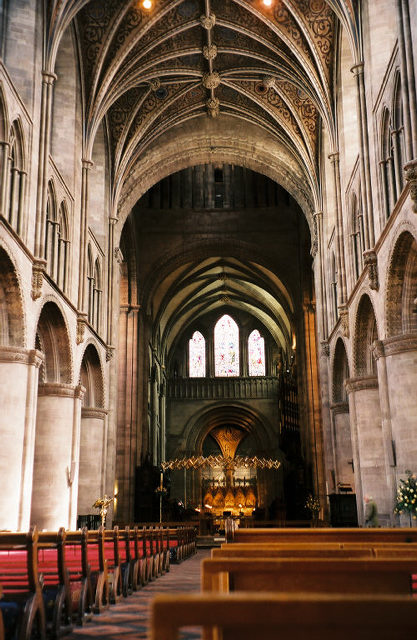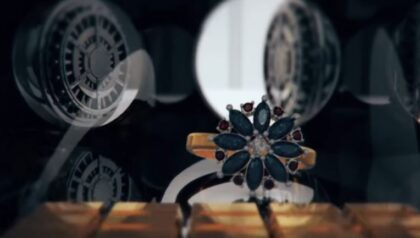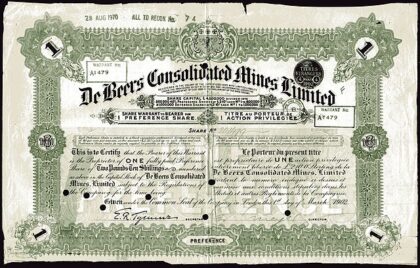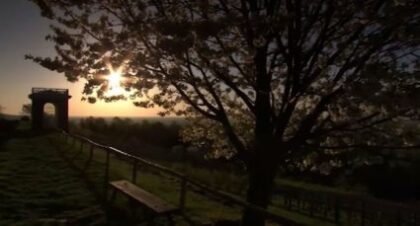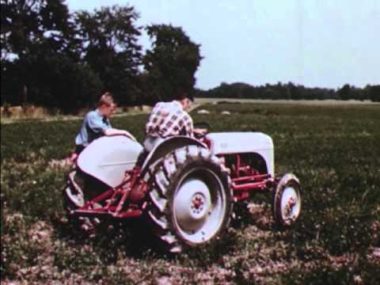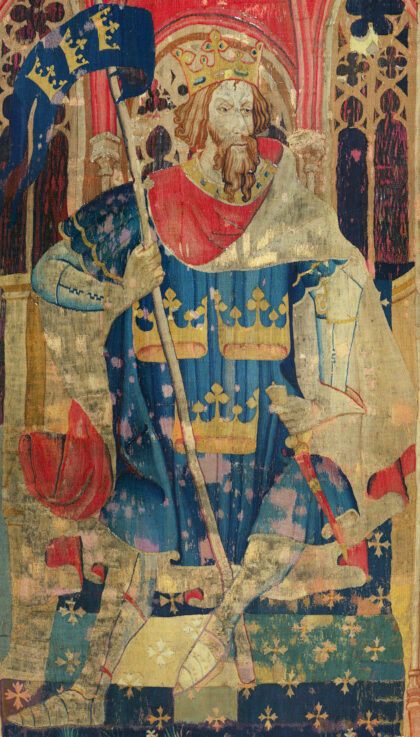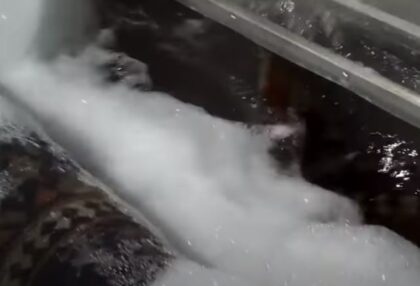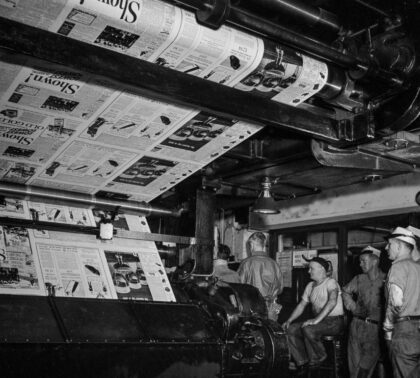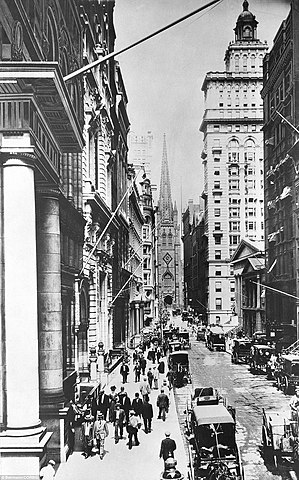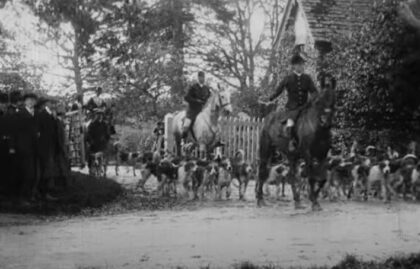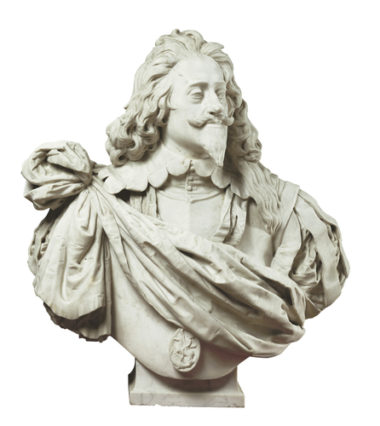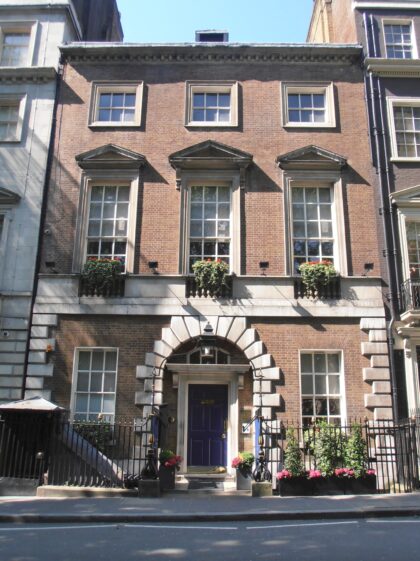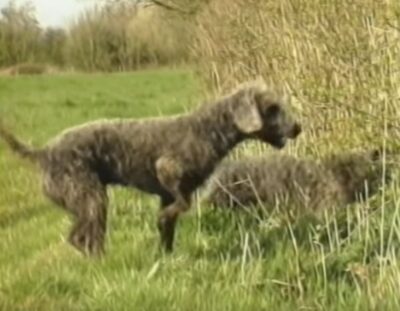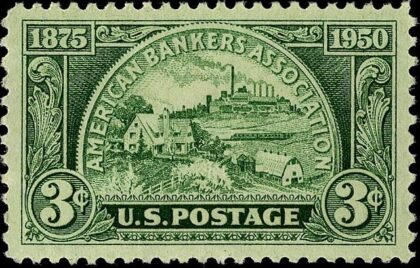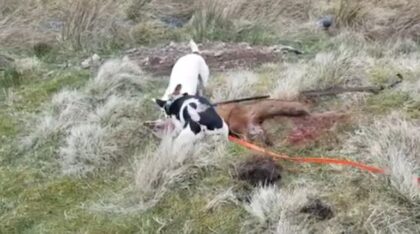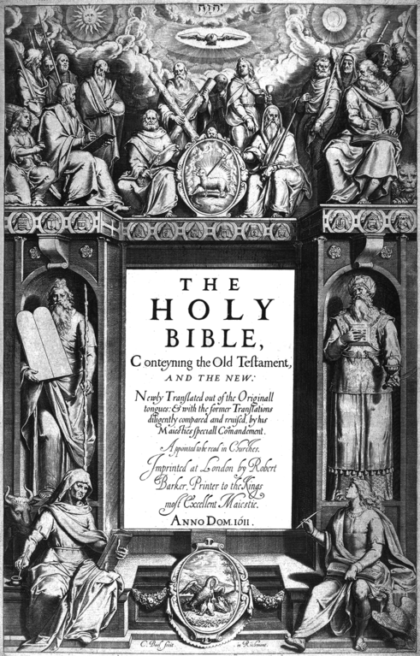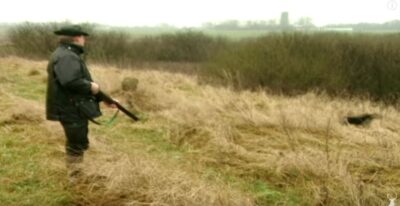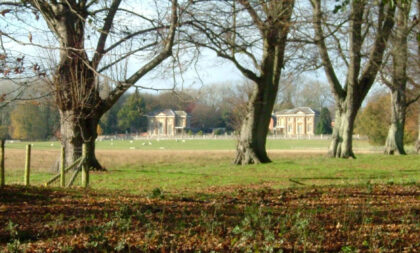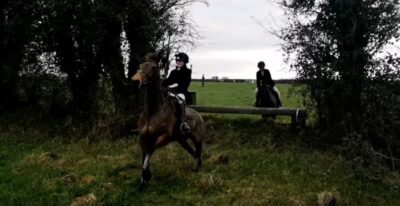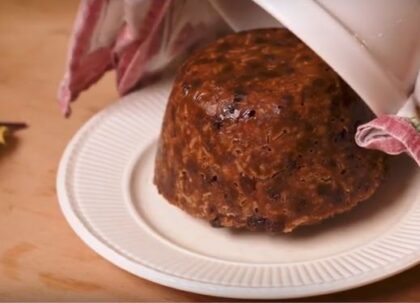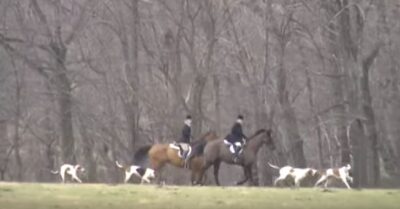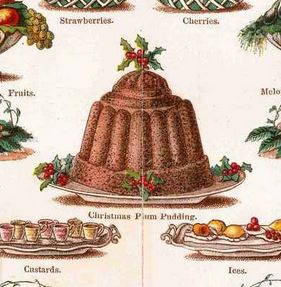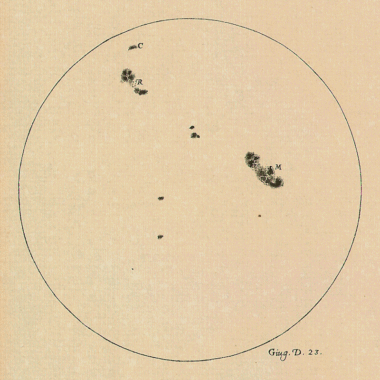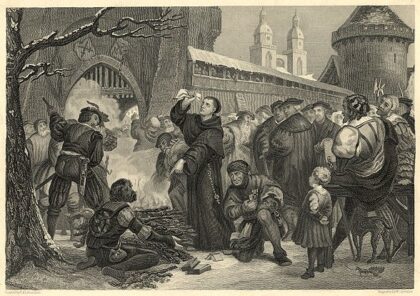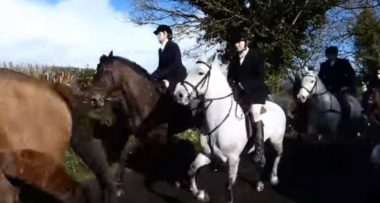
|
April 29th, 2021 Category: Documentary, Debate & Lecture August 10th, 2023 Category: Documentary, Debate & Lecture August 10th, 2023 Category: Documentary, Debate & Lecture, Essays August 10th, 2023 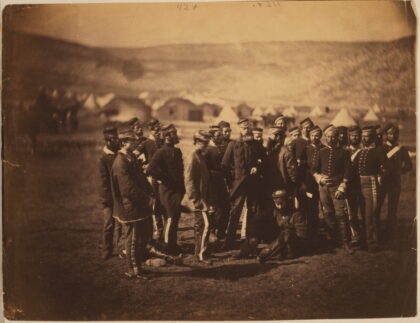 Officers and men of the 13th Light Dragoons, British Army, Crimea. Rostrum photograph of photographer’s original print, uncropped and without color correction. Survivors of the Charge. Half a league, half a league,
Half a league onward,
All in the valley of Death
Rode the six hundred.
“Forward, the Light Brigade!
Charge for the guns!” he said.
Into the valley of Death
Rode the six hundred.
Continue reading The Charge of the Light Brigade HomeTop of Pg.Category: Poems August 10th, 2023  Sucker The components of any given market place include both physical structures set up to accommodate trading, and participants to include buyers, sellers, brokers, agents, barkers, pushers, auctioneers, agencies, and propaganda outlets, and banking or transaction exchange facilities. Markets are generally set up by sellers as it is in their self-interest to sell their goods and services to generate private or public profits. Continue reading The Apparatus of the Stock Market HomeTop of Pg.Category: Finance May 7th, 2021  Crewe Hall Dining Room
THE transient tenure that most of us have in our dwellings, and the absorbing nature of the struggle that most of us have to make to win the necessary provisions of life, prevent our encouraging the manufacture of well-wrought furniture. We mean to outgrow our houses—our lease expires after so many years and then we shall want an entirely different class of furniture; consequently we purchase articles that have only sufficient life in them to last the brief period of our occupation, and are content to abide by the want of appropriateness or beauty, in the clear intention of some day surrounding ourselves with objects that shall be joys to us for the remainder of our life. Another deterrent condition to making a serious outlay in furniture is the instability of fashion: each decade sees a new style, and the furniture that we have acquired in the exercise of our experienced taste will in all probability be discarded by the impetuous purism of the succeeding generation. Continue reading Of the Room and Furniture HomeTop of Pg.Category: Art & Restoration, Essays May 10th, 2021 Category: Documentary, Debate & Lecture April 23rd, 2021
Dr. David Starkey, the UK’s premiere historian, speaks to the modern and fleeting notion of “cancel culture”. Starkey’s brilliance is unparalleled and it has become quite obvious to the world’s remaining Western scholars willing to stand on intellectual integrity that a few so-called “Woke Intellectuals” most certainly cannot undermine his historic intellectual credibility and contribution to British History. This is an interview worth watching. HomeTop of Pg.Category: Documentary, Debate & Lecture May 8th, 2021 Category: Documentary, Debate & Lecture August 8th, 2023 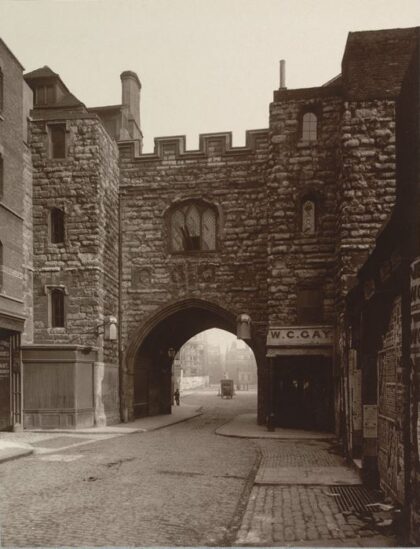 “Saint John’s Gate, Clerkenwell, the main gateway to the Priory of Saint John of Jerusalem,” black and white photograph by the British photographer Henry Dixon, 1880. The church was founded in the 12th century by Jordan de Briset, a Norman knight. Prior Docwra completed the gatehouse shown in this photograph in 1504. The gateway served as the main entry to the Priory, which was the center of the Order of St John of Jerusalem (the Knights Hospitallers). Courtesy of the British Library, London. Rules for politeness should be unnecessary. But although we have no belief in rules, there are certain hints which may be useful. There is a natural rhythm in life which varies with temperament. Quietness and gravity and steadiness of feature are signal marks of good breeding. Approachableness and patience in giving up the whole of one’s attention to those who seek it at the moment, are needed. Few things are so vulgar as to be everlastingly in a hurry. Egotism is also a mark of ill-breeding; one should beware of unnecessary apologies, for apology is only egotism in another form. Serious discussion with disinterested people on one’s personal domestic troubles, and particularly on one’s health, is decidedly bad form; so is carelessness in speech and conversation in any direction. 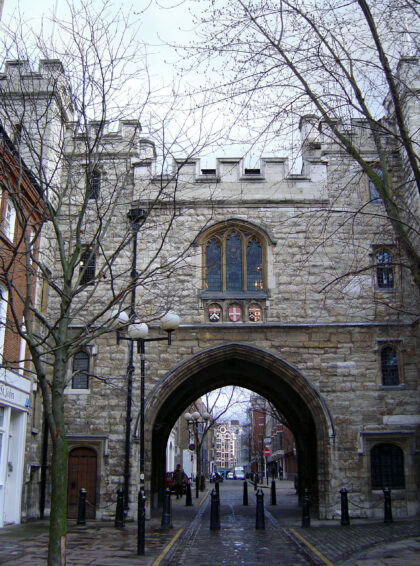 Modern view. Continue reading A Note on Ill-Breeding from a Knight of Grace of the Order of St. John of Jerusalem HomeTop of Pg.Category: Essays May 8th, 2021 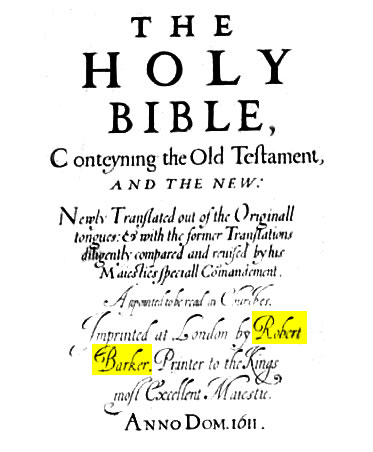 Richard Barker KJ Title Pg. Robert Barker was the printer of the first edition of the King James Bible in 1611. He was the printer to King James I and son of Christopher Barker, printer to Queen Victoria I.
HomeTop of Pg.Category: Documentary, Debate & Lecture August 8th, 2023
On the decline of the Roman power, about five centuries after Christ, the countries of Northern Europe were left almost destitute of a national government. Numerous chiefs, more or less powerful, held local sway, as far as each could enforce his dominion, and occasionally those chiefs would unite for a common object; but, in ordinary times, they were much more likely to be found in hostility to one another. In such a state of things the rights of the humbler classes of society were at the mercy of every assailant; and it is plain that, without some check upon the lawless power of the chiefs, society must have relapsed into barbarism. Such checks were found, first, in the rivalry of the chiefs themselves, whose mutual jealousy made them restraints upon one another; secondly, in the influence of the Church, which, by every motive, pure or selfish, was pledged to interpose for the protection of the weak; and lastly, in the generosity and sense of right which, however crushed under the weight of passion and selfishness, dwell naturally in the heart of man. From this last source sprang Chivalry, which framed an ideal of the heroic character, combining invincible strength and valor, justice, modesty, loyalty to superiors, courtesy to equals, compassion to weakness, and devotedness to the Church; an ideal which, if never met with in real life, was acknowledged by all as the highest model for emulation. Continue reading The Age of Chivalry HomeTop of Pg.Category: Essays September 28th, 2020 Category: Documentary, Debate & Lecture February 18th, 2021
Baking is a very similar process to roasting: the two often do duty for one another. As in all other methods of cookery, the surrounding air may be several degrees hotter than boiling water, but the food is no appreciably hotter until it has lost water by evaporation, after which it may readily burn. The hot air of the oven is greedy of water, and evaporation is great, so that ordinary baking (i.e. just shutting the food into a hot-air chamber) is not suited for anything that needs moist heat. Continue reading Mrs. Beeton’s Poultry & Game — Cooking Poultry; Baking and Boiling HomeTop of Pg.Category: Country House Cooking May 8th, 2021 Category: Gamekeeping May 10th, 2021 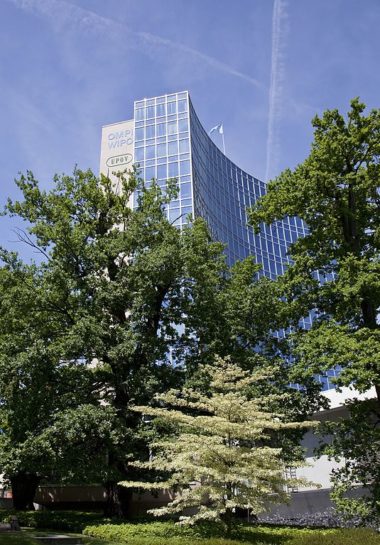 WIPO HQ Geneva UNITED STATES PLANT VARIETY PROTECTION ACT TITLE I – PLANT VARIETY PROTECTION OFFICE CHAPTER 1.-ORGANIZATION AND PUBLICATIONS HomeTop of Pg.Category: Essays August 8th, 2023
NEWSPAPER.-Printed sheets published at stated intervals, chiefly for the purpose of conveying intelligence on current events. The Romans wrote out an account of the most memorable occurrences of the day, which were sent to public officials. They were entitled Acta Durna, and read substantially like the local column of a country weekly paper of to-day. Before the invention of printing letters were written regularly by persons in the chief capitals of Europe and dispatched to those who felt an interest in public affairs. For this the correspondents were paid. The earliest English journal in print was the Weekly Newes from Italy, Germanie, &c., in 1622, a prior newspaper preserved in the British Museum which contained an account of the Spanish Armada being regarded as a forgery. The first attempt at reporting Parliament was made in 1641, and the first daily newspaper in England was the Daily Courant, in 1702. The London Times was founded in 1788. Continue reading History and Facts on American Newspaper Production from the Colonial Times Through the 1890s. HomeTop of Pg.Category: Essays August 8th, 2023  The Apex Building, headquarters of the Federal Trade Commission, on Constitution Avenue and 7th Streets in Washington, D.C.. The building was designed by Edward H. Bennett under the purview of Secretary of the Treasury Andrew W. Mellon, and was completed in 1938 at a cost of $125 million. Photo by Carol M. Highsmith
FEDERAL TRADE COMMISSION The US Government has laws guiding the business practices of the Jewelry and Precious Metals Industries. If you are unclear as a seller as to your obligations under the law as related to any of these products or are wondering as a buyer whether or not a seller is accurately describing an item for sale and following the law, then this document is well worth a read. Click to read a copy of 16 CFR Part 23 as updated in 2018. Click on the blue link to download a copy of 16 CFR Part 23, Guides for the Jewelry, Precious Metals, and Pewter Industries Continue reading FTC Rules Guiding the Jewelry, Precious Metals, and Pewter Industries HomeTop of Pg.Category: Essays May 8th, 2021  Mortlake Tapestries at Chatsworth House
Click here to learn more about the Mortlake Tapestries of Chatsworth The Mortlake Tapestries were founded by Sir Francis Crane. From the Dictionary of National Biography, 1885-1900, Volume 13 Crane, Francis CRANE, Sir FRANCIS (d. 1636), was the director of the tapestry works established at Mortlake under the patronage of James I. His origin is generally assigned to Norfolk or Suffolk, but of his early history little is known. In April 1606 he had a grant for life of the office of clerk of the parliament, and he was secretary to Charles I when prince of Wales, and during his secretaryship he was knighted at Coventry (4 Sept. 1617). C. S. Gilbert in his history of Cornwall asserts that Crane was a member of the family of that name seated at Crane in Camborne, but this statement is unsupported by any authority. Continue reading Mortlake Tapestries of Chatsworth HomeTop of Pg.Category: Documentary, Debate & Lecture February 15th, 2021
There is nothing more delightful than a great poetry reading to warm ones heart on a cold winter night fireside. Today is one of the coldest Valentine’s days on record, thus, nothing could be better than listening to the resonant voice of Robin Shuckbrugh, The Cotswold Explorer , read classic love poetry to set the mood for a cozy evening with that special person. Mr. Shuckbrugh is the presenter and one of the three creative minds behind the Youtube channel The Costwold Explorer, a most entertaining documentary series that brings the Cotswold area of the UK to life. HomeTop of Pg.Category: Poems August 8th, 2023
Reprint from The Pitfalls of Speculation by Thomas Gibson 1906 Ed. THE PUBLIC ATTITUDE TOWARD SPECULATION THE public attitude toward speculation is generally hostile. Even those who venture frequently are prone to speak discouragingly of speculative possibilities, and to point warningly to the fact that an overwhelming majority of speculative commitments result in loss, while those who venture not at all, and consequently are incompetent to judge, dismiss the subject with the statement that marginal trading is gambling, pure and simple, and is therefore pernicious. Those who enter into the subject a little farther, and attempt to adduce more specific argument against speculative possibilities, lay stress upon the statement that manipulation, trickery and wholesale deception render it impossible for the outsider to enter the field safely or intelligently. These statements, usually unsupported, and frequently insupportable, are accepted by the prejudiced multitude as gospel truth, without any attempt being made to examine their foundation or correctness. Continue reading Public Attitudes Towards Speculation HomeTop of Pg.Category: Essays February 15th, 2021
From Fores’s Sporting Notes and Sketches, A Quarterly Magazine Descriptive of British, Indian, Colonial, and Foreign Sport with Thirty Two Full Page Illustrations Volume 10 1893, London; Mssrs. Fores Piccadilly W. 1893, All Rights Reserved. GLIMPSES OF THE CHASE, FOX-HUNTING has, like Racing, Shooting, and even Dancing, had its phases and fashions ever since it became a National sport, and we may be pretty sure that though we of the guild and fraternity of fin desiecle fox-hunters make it our boast that as the ‘ heirs of all the ages ‘ we have brought the royal sport to the acme of perfection, every contemporary phase was the best adapted to the manners, customs, and requirements of the period ; and that, grotesque and absurd as some of the practices of our forbears appear to us now, many of our improvements and requirements and sublimations of sport would afford them in turn many a hearty laugh. After all, if sport be the desideratum, whatever makes for that end in the opinion of its votaries, must be deemed successful, and if real war—of which, according to Somerville and his pupil John Jorrocks, Fox-hunting is the image—was a comparatively innocuous affair in the sixteenth, seventeenth, and eighteenth centuries, when contrasted with the deadly issues of modern scientific slaughter, it attained its aim as effectually as the present system, though more slowly and tentatively. Continue reading Glimpses from the Chase HomeTop of Pg.Category: The Hunt May 8th, 2021 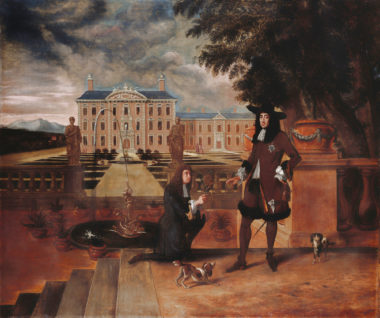 First Pineapple Grown in England Click here to read an excellent article on the history of pineapple growing in the UK. Should one be interested in serious mass scale production, click here for scientific resources. Growing pineapples in the UK.
The video below demonstrates how to grow pineapples in Florida.
Another method:
HomeTop of Pg.Category: Documentary, Debate & Lecture May 8th, 2021
As reported in the The Colac Herald on Friday July 17, 1903 Pg. 8 under Art Appreciation as a reprint from the Westminster Gazette ART APPRECIATION IN THE COMMONS. The appreciation of art as well as of history which is entertained by the average member of the House of Commons was effectively gauged by the titter which greeted the suggestion that some thing specially derogatory to the statue of Mr Bright had been done by its being “shoved into a corner” near the bust of the Lord Protector Oliver. Mr Bruce Joy would scarcely claim to be a Bernini, and that great Italian sculptor, if he could revisit the glimpses of the moon, would assuredly be impressed by the vicissitudes of his portrait bust of two successive rulers of this country, Charles I and Oliver Cromwell. Concerning the former, a singular story used to be told, to the effect that Van Dyck, having drawn the Stuart King in profile, three quarters and full face, sent the result to Rome for Bernini to make a therefrom. Continue reading On Bernini’s Bust of a Stewart King HomeTop of Pg.Category: Art & Restoration February 3rd, 2021 Category: Finance August 7th, 2023
Over the years I have observed a decline in manners amongst young men as a general principle and though there is not one particular thing that may be asserted as the causal reason for this, one might speculate… Self-awareness and being aware of one’s surroundings in social interactions is something worth contemplating should a young man wish to make a goodly and lasting impression with future mother and father-in-laws, potential business clients, educated members of the clergy and perhaps the occasional fixer should one be inclined to take up politics—Caveat; not all fixers are especially socially adept, what? Continue reading A Short Note on Manners for the Young Man Wishing to Make a Goodly Impression Whilst Avoiding Duels HomeTop of Pg.Category: Essays May 8th, 2021 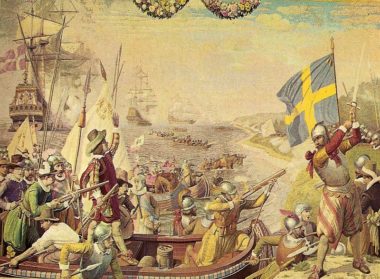 Wojna Kalmarska – 1611 The Kalmar War From The Historian’s History of the World (In 25 Volumes) by Henry Smith William L.L.D. – Vol. XVI.(Scandinavia) Pg. 308-310 The northern part of the Scandinavian peninsula, as already noticed, had been peopled from the remotest times by nomadic tribes called Finns or Cwenas by the Norwegians and Lapps by the Swedes, from which their territory derived the name of Lapland. These aboriginal inhabitants retained their primitive manners, language, and religion, unaffected by the progress of Christianity in the North. No definite boundary separated the adjacent kingdoms of Sweden and Norway from the dreary wilderness occupied by their less civilised neighbours who subsisted by hunting and fishing. The progress of conquest had gradually pressed them nearer to the borders of the arctic circle, but still even under the Union of Kalmar their territorial limits remained undefined. Continue reading The Kalmar War HomeTop of Pg.Category: Essays August 7th, 2023
Resolution adapted at the New Orleans Convention of the American Institute of Banking, October 9, 1919: “Ours is an educational association organized for the benefit of the banking fraternity of the country and within our membership may be found on an equal basis both employees and employers; and in full appreciation of the opportunities which our country and its established institutions afford, and especially in appreciation of the fact that the profession of banking affords to its diligent and loyal members especial opportunities for promotion to official and managerial positions, and that as a result of the establishment and maintenance of the merit system in most banks a large number of Institute members have through individual application achieved marked professional success, we at all times and under all circumstances stand for the merit system and for the paying of salaries according to the value of the service rendered. “We believe in the equitable cooperation of employees and employers and are opposed to all attempts to limit individual initiative and curtail production, and, insofar as our profession is concerned, are unalterably opposed to any plan purporting to promote the material welfare of our members, individually or collectively, on any other basis that that of efficiency, loyalty and unadulterated Americanism.” HomeTop of Pg.Category: Finance August 7th, 2023 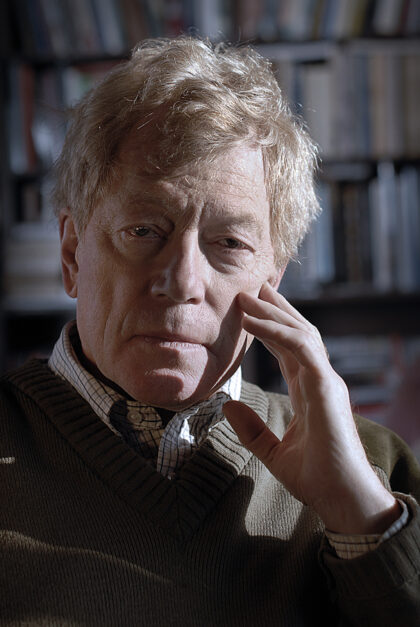 Roger Scruton by Peter Helm This is one of those videos that the so-called intellectual left would rather not be seen by the general public as it makes a laughing stock of the idiots running the artworld, a multi-billion dollar business. https://archive.org/details/why-beauty-matters-roger-scruton
HomeTop of Pg.Category: Documentary, Debate & Lecture August 7th, 2023 Category: Documentary, Debate & Lecture May 8th, 2021  Armorial tablet of the Stewarts – Falkland Palace Fife, Scotland. The Stewart Kings – King James I & VI to Charles II
Six video playlist on the Kings of England: HomeTop of Pg.Category: Documentary, Debate & Lecture May 8th, 2021 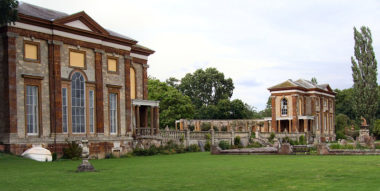 Stoke Park Pavillions
From Wikipedia: Stoke Park – the original house Stoke park was the first English country house to display a Palladian plan: a central house with balancing pavilions linked by colonnades or screen walls. Palladio was the 16th-century Italian architect on whose work the design was based. The Paladian style became a standard type of country house construction in 18th century England under Lord Burlington. However, 80 years earlier Stoke Park in Northamptonshire was the first example, believed to have been constructed by Inigo Jones. The house ca.1700 is pictured in Colen Campbell’s (sic) Vitruvius Britannicus (meaning British Architect). Charles I granted the park and Manor House to Sir Francis Crane, director and founder of the Mortlake Tapestry Works established on the estate of John Dee, the mathematician, at Mortlake, in 1619, later the site of the Queen’s Head pub. Crane was made Secretary to Charles I when he was Prince of Wales and was knighted in 1617. With grants of land, money and high prices charged for tapestries, Crane became very wealthy. He was granted ca.400 acres of Stoke Bruerne in 1629. Crane brought the design of the house from Italy and had assistance from Indigo Jones to build it.  Stoke Park: the house ca.1700 as pictured in Colen Campbell’s Vitruvius Britannicus (meaning British Architect).
HomeTop of Pg.Category: Essays August 9th, 2020
Traditional British Christmas Pudding Recipe by Pen Vogler from the Charles Dickens Museum Ingredients
Method Mix together well, add 1 medium grated apple, mix again, beat three eggs plus 140ml brandy, add to dry mixture, stir together well. Grease pudding basin with butter, cut a small piece of grease proof paper to cover bottom, pack in pudding, cover with parchment another round of grease proof paper, cover with large squares grease proof paper and tin foil, tie up tightly with string and make string handle to prevent water from invading pudding. Set on saucer in large covered pan, water half way up pudding basin and boil for 3 ½ hours.
To learn more about Mrs. Vogler and her cooking adventures, click here. Click here to purchase a copy of Christmas with Dickens by Pen Vogler.
HomeTop of Pg.Category: Country House Cooking August 9th, 2020
Country House Christmas Pudding Ingredients
Method
HomeTop of Pg.Category: Country House Cooking May 8th, 2021 Category: Documentary, Debate & Lecture August 8th, 2020
“The Leda, in the Colonna palace, by Correggio, is dead-coloured white and black, with ultramarine in the shadow ; and over that is scumbled, thinly and smooth, a warmer tint,—I believe caput mortuum. The lights are mellow ; the shadows blueish, but mellow. The picture is painted on panel, in a broad and large manner, but finished like enamel : the shadows harmonize, and are lost in the ground. Continue reading Sir Joshua Reynolds — Notes from Rome HomeTop of Pg.Category: Art & Restoration May 10th, 2021
BOOKS CONDEMNED By JAMES ANSON FARRER,
LONDON ELLIOT STOCK, 62, PATERNOSTER ROW 1892 ———- WHEN did books first come to be burnt in England by the common hangman, and what was the last book to be so treated? This is the sort of question that occurs to a rational curiosity, but it is just this sort of question to which it is often most difficult to find an answer. Historians are generally too engrossed with the details of battles, all as drearily similar to one another as scenes of murder and rapine must of necessity be, to spare a glance for the far brighter and more instructive field of the mutations or of the progress of manners. The following work is an attempt to supply the deficiency on this particular subject. Continue reading Books Condemned to be Burnt HomeTop of Pg.Category: Essays May 9th, 2021 Category: The Hunt August 8th, 2020 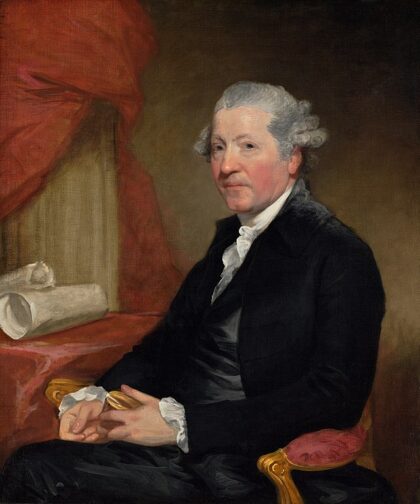 Gilbert Stewart – Sir Joshua Reynolds
SIR JOSHUA REYNOLDS‘ WORKING COLOURS, WITH THE ORDER IN WHICH THEY WERE ARRANGED ON HIS PALLETTE. “For painting the flesh, black, blue black, white, lake, carmine, orpiment, yellow ochre, ultramarine, and varnish. “To lay the pallette:—first lay carmine and white in different degrees: second, lay orpiment and white, ditto: third lay blue black and white, ditto. “The first sitting, make a mixture on the pallette for expedition, as near the sitter’s complexion as you can. Continue reading Sir Joshua Reynolds’ Memoranda on Painting — December 1755 HomeTop of Pg.Category: Art & Restoration |
There’s a Lesson or Two in Here Somewhere if you pay attention
Absolutely Brilliant! And as I am quite certain you will become a fan, there’s more! Home Top of Pg. Read more → Blackberry Wine
BLACKBERRY WINE 5 gallons of blackberries 5 pound bag of sugarFill a pair of empty five gallon buckets half way with hot soapy water and a ¼ cup of vinegar. Wash thoroughly and rinse. Fill one bucket with two and one half gallons of blackberries and crush with [...] Read more → Sennen Cove, UK WWII FootageJP Morgan’s Digital Currency Patent Application
J.P. Morgan Patent #8,452,703 Method and system for processing internet payments using the electronic funds transfer network. Abstract Embodiments of the invention include a method and system for conducting financial transactions over a payment network. The method may include associating a payment address of an account [...] Read more → The Charge of the Light Brigade
Officers and men of the 13th Light Dragoons, British Army, Crimea. Rostrum photograph of photographer’s original print, uncropped and without color correction. Survivors of the Charge. Half a league, half a league, Half a league onward, All in the valley of Death Rode the six hundred. “Forward, the Light Brigade! Charge for the [...] Read more →Historical Uses of Arsenic
The arsenicals (compounds which contain the heavy metal element arsenic, As) have a long history of use in man – with both benevolent and malevolent intent. The name ‘arsenic’ is derived from the Greek word ‘arsenikon’ which means ‘potent'”. As early as 2000 BC, arsenic trioxide, obtained from smelting copper, was used [...] Read more → A Cure for Distemper in Dogs
The following cure was found written on a front flyleaf in an 1811 3rd Ed. copy of The Sportsman’s Guide or Sportsman’s Companion: Containing Every Possible Instruction for the Juvenille Shooter, Together with Information Necessary for the Experienced Sportsman by B. Thomas.
Transcript: Vaccinate your dogs when young [...] Read more → The King James Bible – 1611Making Chocolate From Tree to Treat
Donate to the YouTube site owner Gabe and he might send you some chocolate…. Home Top of Pg. Read more →Target Practice
Nov. 12, 1898 Forest and Stream Pg. 396 The Veterans to the Front. Ironton. O., Oct. 28.—Editor Forest and Stream: I mail you a target made here today by Messrs. E. Lawton, G. Rogers and R. S. Dupuy. Mr. Dupuy is seventy-four years old, Mr. Lawton seventy-two. Mr. Rogers [...] Read more → King Lear
Edwin Austin Abbey. King Lear, Act I, Scene I (Cordelia’s Farewell) The Metropolitan Museum of Art. Dates: 1897-1898 Dimensions: Height: 137.8 cm (54.25 in.), Width: 323.2 cm (127.24 in.) Medium: Painting – oil on canvas Home Top of Pg. Read more → David Starkey: Britain’s Last Great Historian
Dr. David Starkey, the UK’s premiere historian, speaks to the modern and fleeting notion of “cancel culture”. Starkey’s brilliance is unparalleled and it has become quite obvious to the world’s remaining Western scholars willing to stand on intellectual integrity that a few so-called “Woke Intellectuals” most certainly cannot undermine [...] Read more → Snipe Shooting
Snipe shooting-Epistle on snipe shooting, from Ned Copper Cap, Esq., to George Trigger-George Trigger’s reply to Ned Copper Cap-Black partridge. —— “Si sine amore jocisque Nil est jucundum, vivas in &more jooisque.” -Horace. “If nothing appears to you delightful without love and sports, then live in sporta and [...] Read more → Indian Modes of Hunting – Setting Fox Traps
Aug. 13, 1898 Forest and Stream, Pg. 125 Game Bag and Gun. Indian Modes of Hunting. III.—Foxes. The fox as a rule is a most wily animal, and numerous are the stories of his cunning toward the Indian hunter with his steel traps. Read more → Indian Modes of Hunting – Musquash
Hudson Bay: Trappers, 1892. N’Talking Musquash.’ Fur Trappers Of The Hudson’S Bay Company Talking By A Fire. Engraving After A Drawing By Frederic Remington, 1892. Indian Modes of Hunting. IV.—Musquash. In Canada and the United States, the killing of the little animal known under the several names of [...] Read more → The Legacy of Felix de Weldon
Felix Weihs de Weldon, age 96, died broke in the year 2003 after successive bankruptcies and accumulating $4 million dollars worth of debt. Most of the debt was related to the high cost of love for a wife living with Alzheimer’s. Health care costs to maintain his first wife, Margot, ran $500 per [...] Read more → Dr. Fred Kummerow – Cholesterol Myths Debunked
Fred Kummerow on statin drugs (excerpt) from Jeremy Stuart on Vimeo. Dr. Kummerow passed away at the ripe old age of 102 in 2017. Click here to visit Dr. Mercola’s website. Home Top of Pg. Read more →The Stuart Kings and King James I & VI to Charles II
Armorial tablet of the Stewarts – Falkland Palace Fife, Scotland. The Stewart Kings – King James I & VI to Charles II Six video playlist on the Kings of England: Home Top of Pg. Read more →The Standard Navy Cutter and a Whale Boat Design
Dec. 24, 1898 Forest and Stream Pg. 513-514 The Standard Navy Boats. Above we find, The accompanying illustrations show further details of the standard navy boats, the lines of which appeared last week. In all of these boats, as stated previously, the quality of speed has been given [...] Read more → Guaranteed 6% Dividend for Life. Any takers?
Any prudent investor would jump at the chance to receive a guaranteed 6% dividend for life. So how does one get in on this action? The fact of the matter is…YOU can’t…That is unless you are a shareholder of one of the twelve Federal Reserve Banks and the banks under [...] Read more → Tobacco as Medicine
The first published illustration of Nicotiana tabacum by Pena and De L’Obel, 1570–1571 (shrpium adversana nova: London). Tobacco can be used for medicinal purposes, however, the ongoing American war on smoking has all but obscured this important aspect of ancient plant. Tobacco is considered to be an indigenous plant of [...] Read more → English Cottage GardensHome Top of Pg. Read more → Jerry Lee Lewis – Hammersmith Odeon, London, 1983Home Top of Pg. Read more → Knots The Sailors UseNew Orleans Street BandsHome Top of Pg. Read more → Artist Methods
Como dome facade – Pliny the Elder – Photo by Wolfgang Sauber Work in Progress… THE VARNISHES. Every substance may be considered as a varnish, which, when applied to the surface of a solid body, gives it a permanent lustre. Drying oil, thickened by exposure to the sun’s heat or [...] Read more → History and Facts on American Newspaper Production from the Colonial Times Through the 1890s.
NEWSPAPER.-Printed sheets published at stated intervals, chiefly for the purpose of conveying intelligence on current events. The Romans wrote out an account of the most memorable occurrences of the day, which were sent to public officials. They were entitled Acta Durna, and read substantially like the local column of a [...] Read more → The Field of the Cloth of Gold
Reprint from the Royal Collection Trust Website The meeting between Henry VIII and Francis I, known as the Field of the Cloth of Gold, took place between 7 to 24 June 1520 in a valley subsequently called the Val d’Or, near Guisnes to the south of Calais. The [...] Read more → The First Pineapple Grown in England
First Pineapple Grown in England Click here to read an excellent article on the history of pineapple growing in the UK. Should one be interested in serious mass scale production, click here for scientific resources. Growing pineapples in the UK. The video below demonstrates how to grow pineapples in Florida. [...] Read more →Swiss Chronicle of Monetary Events
Click here to read the Swiss National Bank’s Chronicle of Monetary Events. Home Top of Pg. Read more →The Billesden Coplow Run
*note – Billesdon and Billesden have both been used to name the hunt. BILLESDEN COPLOW POEM [From “Reminiscences of the late Thomas Assheton Smith, Esq”] The run celebrated in the following verses took place on the 24th of February, 1800, when Mr. Meynell hunted Leicestershire, and has since been [...] Read more → Producing and Harvesting Tobacco Seed
THE FIRST step in producing a satisfactory crop of tobacco is to use good seed that is true to type. The grower often can save his own seed to advantage, if he wants to. Before topping is done, he should go over the tobacco field carefully to pick [...] Read more → Electroplating 101Home Top of Pg. Read more → On Bernini’s Bust of a Stewart King
As reported in the The Colac Herald on Friday July 17, 1903 Pg. 8 under Art Appreciation as a reprint from the Westminster Gazette ART APPRECIATION IN THE COMMONS. The appreciation of art as well as of history which is entertained by the average member of the [...] Read more → Old Time Recipes for Homemade Wines, Cordials, and Liqueurs
INTRODUCTION The idea of compiling this little volume occurred to me while on a visit to some friends at their summer home in a quaint New England village. The little town had once been a thriving seaport, but now consisted of hardly more than a dozen old-fashioned Colonial houses facing [...] Read more → Bess of Hardwick: Four Times a Lady
Bess of Harwick Four times the nuptial bed she warm’d, And every time so well perform’d, That when death spoil’d each husband’s billing, He left the widow every shilling. Fond was the dame, but not dejected; Five stately mansions she erected With more than royal pomp, to vary The prison of her captive When [...] Read more → Chronological Catalog of Recorded Lunar Events
In July of 1968, the National Aeronautics and Space Administration(NASA), published NASA Technical Report TR R-277 titled Chronological Catalog of Recorded Lunar Events. The catalog begins with the first entry dated November 26th, 1540 at ∼05h 00m: Feature: Region of Calippus2 Description: Starlike appearance on dark side Observer: Observers at Worms Reference: [...] Read more →U.S. Coast Guard Radio Information for Boaters
VHF Marifoon Sailor RT144, by S.J. de Waard RADIO INFORMATION FOR BOATERS Effective 01 August, 2013, the U. S. Coast Guard terminated its radio guard of the international voice distress, safety and calling frequency 2182 kHz and the international digital selective calling (DSC) distress and safety frequency 2187.5 kHz. Additionally, [...] Read more → The Birdman of St. James ParkHome Top of Pg. Read more → The First Greek Book by John Williams White
Click here to read The First Greek Book by John Williams White The First Greek Book - 15.7MB IN MEMORIAM JOHN WILLIAMS WHITE The death, on May 9, of John Williams White, professor of Greek in Harvard University, touches a large number of classical [...] Read more → Peach Brandy
PEACH BRANDY 2 gallons + 3 quarts boiled water 3 qts. peaches, extremely ripe 3 lemons, cut into sections 2 sm. pkgs. yeast 10 lbs. sugar 4 lbs. dark raisins Place peaches, lemons and sugar in crock. Dissolve yeast in water (must NOT be to hot). Stir thoroughly. Stir daily for 7 days. Keep [...] Read more → Recipes From Down Under: Kangaroo CutsProper Book Handling and Cleaning
Book Conservators, Mitchell Building, State Library of New South Wales, 29.10.1943, Pix Magazine The following is taken verbatim from a document that appeared several years ago in the Maine State Archives. It seems to have been removed from their website. I happened to have made a physical copy of it at the [...] Read more → How to Make Money – Insurance
Life insurance certificate issued by the Yorkshire Fire & Life Insurance Company to Samuel Holt, Liverpool, England, 1851. On display at the British Museum in London. Donated by the ifs School of Finance. Photo by Osama Shukir Muhammed Amin FRCP(Glasg) From How to Make Money; and How to Keep it, Or, Capital and Labor [...] Read more → Naval Stores – Distilling Turpentine
Chipping a Turpentine Tree DISTILLING TURPENTINE One of the Most Important Industries of the State of Georgia Injuring the Magnificent Trees Spirits, Resin, Tar, Pitch, and Crude Turpentine all from the Long Leaved Pine – “Naval Stores” So Called. Dublin, Ga., May 8. – One of the most important industries [...] Read more → Blunderbuss Mai Tai Recipe
Blackbeard’s Jolly Roger If you’re looking for that most refreshing of summertime beverages for sipping out on the back patio or perhaps as a last drink before walking the plank, let me recommend my Blunderbuss Mai Tai. I picked up the basics to this recipe over thirty years ago when holed up [...] Read more → Horn Measurement
Jul. 23, 1898 Forest and Stream, Pg. 65 Horn Measurements. Editor Forest and Stream: “Record head.” How shamefully this term is being abused, especially in the past three years; or since the giant moose from Alaska made his appearance in public and placed all former records (so far as [...] Read more → The Public Attitude Towards Speculation
Reprint from The Pitfalls of Speculation by Thomas Gibson 1906 Ed. THE PUBLIC ATTITUDE TOWARD SPECULATION THE public attitude toward speculation is generally hostile. Even those who venture frequently are prone to speak discouragingly of speculative possibilities, and to point warningly to the fact that an [...] Read more → Chinese Duck Cooking – A Few Recipes
Chen Lin, Water fowl, in Cahill, James. Ge jiang shan se (Hills Beyond a River: Chinese Painting of the Yuan Dynasty, 1279-1368, Taiwan edition). Taipei: Shitou chubanshe fen youxian gongsi, 1994. pl. 4:13, p. 180. Collection of the National Palace Museum, Taipei. scroll, light colors on paper, 35.7 x 47.5 cm
Read more → Mr. Bert Gripton, a Great TerriermanHome Top of Pg. Read more → How to Sail a Full Rigged Ship
The rigging of an old square rig in London, United Kingdom. Photograph taken by Melongrower. Home Top of Pg. Read more → Gold and Economic Freedom
by Alan Greenspan, 1967 An almost hysterical antagonism toward the gold standard is one issue which unites statists of all persuasions. They seem to sense-perhaps more clearly and subtly than many consistent defenders of laissez-faire — that gold and economic freedom are inseparable, that the gold standard is an instrument [...] Read more → A Conversation between H.F. Leonard and K. Higashi
H.F. Leonard was an instructor in wrestling at the New York Athletic Club. Katsukum Higashi was an instructor in Jujitsu. “I say with emphasis and without qualification that I have been unable to find anything in jujitsu which is not known to Western wrestling. So far as I can see, [...] Read more → Cocillana Syrup Compound
Guarea guidonia Recipe 5 Per Cent Alcohol 8-24 Grain – Heroin Hydrochloride 120 Minims – Tincture Euphorbia Pilulifera 120 Minims – Syrup Wild Lettuce 40 Minims – Tincture Cocillana 24 Minims – Syrup Squill Compound 8 Gram – Ca(s)ecarin (P, D, & Co.) 8-100 Grain MentholDose – One-half to one fluidrams (2 to [...] Read more → Henry MillerGout Remedies
Jan Verkolje Antonie van Leeuwenhoek was the first person to describe gout or uric acid crystals 1679. For one suffering gout, the following vitamins, herbs, and extracts may be worth looking into: Vitamin C Folic Acid – Folic Acid is a B vitamin and is also known as B9 – [Known food [...] Read more →Saving Notre DameHome Top of Pg. Read more → A Summer Memory
Here, where these low lush meadows lie, We wandered in the summer weather, When earth and air and arching sky, Blazed grandly, goldenly together. And oft, in that same summertime, We sought and roamed these self-same meadows, When evening brought the curfew chime, And peopled field and fold with shadows. I mind me [...] Read more → List of the 60 Franklin Library Signed Limited Editions
The following highly collectible Franklin Library Signed Editions were published between 1977 and 1982. They are all fully leather bound with beautiful covers and contain gorgeous and rich silk moire endpapers. Signatures are protected by unattached tissue inserts. The values listed are average prices that were sought by [...] Read more → Spem In Alium performed by The Tallis ScholarsChristmas Pudding with Dickens
Traditional British Christmas Pudding Recipe by Pen Vogler from the Charles Dickens Museum Ingredients 85 grams all purpose flour pinch of salt 170 grams Beef Suet 140 grams brown sugar tsp. mixed spice, allspice, cinnamon, cloves, &c 170 grams bread crumbs 170 grams raisins 170 grams currants 55 grams cut mixed peel Gram to [...] Read more →A History of the Use of Arsenicals in Man
The arsenicals (compounds which contain the heavy metal element arsenic, As) have a long history of use in man – with both benevolent and malevolent intent. The name ‘arsenic’ is derived from the Greek word ‘arsenikon’ which means ‘potent'”. As early as 2000 BC, arsenic trioxide, obtained from smelting copper, was used [...] Read more → How Long is Your Yacht?
Dominion, Royal St. Lawrence Yacht Club,Winner of Seawanhaka Cup, 1898. The Tail Wags the Dog. The following is a characteristic sample of those broad and liberal views on yachting which are the pride of the Boston Herald. Speaking of the coming races for the Seawanhaka international challenge cup, it says: [...] Read more →Arsenic and Old Lace
What is follows is an historical article that appeared in The Hartford Courant in 1916 about the arsenic murders carried out by Mrs. Archer-Gilligan. This story is the basis for the 1944 Hollywood film “Arsenic and Old Lace” starring Cary Grant and Priscilla Lane and directed by Frank Capra. The [...] Read more → The Sinking of the LaconiaHome Top of Pg. Read more → Why Beauty Matters
Roger Scruton by Peter Helm This is one of those videos that the so-called intellectual left would rather not be seen by the general public as it makes a laughing stock of the idiots running the artworld, a multi-billion dollar business. https://archive.org/details/why-beauty-matters-roger-scruton or Click here to watch [...] Read more →A General Process for Making Wine
A General Process for Making Wine. Gathering the Fruit Picking the Fruit Bruising the Fruit Vatting the Fruit Vinous Fermentation Drawing the Must Pressing the Must Casking the Must Spirituous Fermentation Racking the Wine Bottling and Corking the Wine Drinking the WineGATHERING THE FRUIT. It is of considerable consequence [...] Read more → Period Furniture IdentificationPalermo Wine
Take to every quart of water one pound of Malaga raisins, rub and cut the raisins small, and put them to the water, and let them stand ten days, stirring once or twice a day. You may boil the water an hour before you put it to the raisins, and let it [...] Read more → Glimpses from the Chase
From Fores’s Sporting Notes and Sketches, A Quarterly Magazine Descriptive of British, Indian, Colonial, and Foreign Sport with Thirty Two Full Page Illustrations Volume 10 1893, London; Mssrs. Fores Piccadilly W. 1893, All Rights Reserved. GLIMPSES OF THE CHASE, Ireland a Hundred Years Ago. By ‘Triviator.’ FOX-HUNTING has, like Racing, [...] Read more → The Famous Kilkenny Hunt – 1930Home Top of Pg. Read more → What’s the Matter?
A rhetorical question? Genuine concern? In this essay we are examining another form of matter otherwise known as national literary matters, the three most important of which being the Matter of Rome, Matter of France, and the Matter of England. Our focus shall be on the Matter of England or [...] Read more → Krieghoff Shotguns Factory TourA Creative Approach to Saving Ye Olde Cassette Tapes
Quite possibly, the most agonizing decision being made by Baby Boomers across the nation these days is what to do with all that vintage Hi-fi equipment and boxes full of classic rock and roll cassettes and 8-Tracks. I faced this dilemma head-on this past summer as I definitely wanted in [...] Read more → Thomas Jefferson’s Garden BookHome Top of Pg. Read more → Making a High-end TurntablePlatform of the American Institute of Banking in 1919
Resolution adapted at the New Orleans Convention of the American Institute of Banking, October 9, 1919: “Ours is an educational association organized for the benefit of the banking fraternity of the country and within our membership may be found on an equal basis both employees and employers; [...] Read more → A Few Wine Recipes
EIGHTEEN GALLONS is here give as a STANDARD for all the following Recipes, it being the most convenient size cask to Families. See A General Process for Making Wine If, however, only half the quantity of Wine is to be made, it is but to divide the portions of [...] Read more → Formulaes for Re-Creating the Old-Fashioned Drug Store Counter
A Real Soda Jerk FORMULAS FROM VARIOUS SOURCES. Pineapple Frappe. Water, 1 gallon; sugar 2 pounds of water. 61/2 pints, and simple syrup. 2 1/2 pints; 2 pints of pineapple stock or 1 pint of pineapple stock and 1 pint of grated pineapple juice of 6 lemons. Mix, [...] Read more → Arban’s Complete Conservatory Method for Trumpet(Cornet) – Free Download
Click here to view a copy of Arban’s Complete Conservatory Method for Cornet Click on the blue button to download a free copy of Arban’s Complete Conservatory Method for Cornet Arban's - 11.8MB For trumpet players wishing to practice daily using an iPad, simply click [...] Read more → Commercial Fried Fish Cake Recipe
Dried Norwegian Salt Cod Fried fish cakes are sold rather widely in delicatessens and at prepared food counters of department stores in the Atlantic coastal area. This product has possibilities for other sections of the country. Ingredients: Home Top of [...] Read more →FTC Rules Guiding the Jewelry, Precious Metals, and Pewter Industries
The Apex Building, headquarters of the Federal Trade Commission, on Constitution Avenue and 7th Streets in Washington, D.C.. The building was designed by Edward H. Bennett under the purview of Secretary of the Treasury Andrew W. Mellon, and was completed in 1938 at a cost of $125 million. Photo by Carol M. Highsmith [...] Read more → Books Condemned to be Burnt
BOOKS CONDEMNED TO BE BURNT. By JAMES ANSON FARRER, LONDON ELLIOT STOCK, 62, PATERNOSTER ROW 1892 ———- WHEN did books first come to be burnt in England by the common hangman, and what was [...] Read more → Dicken’s Dictionary of the Thames from Oxford to Nore
Charles Dickens wrote much more than novels. In fact he turned out several very interesting dictionaries to include one of London, one of Paris and one on London’s long meandering river Thames. Click here to read a copy of the Dictionary of the Thames. Home Top of Pg. Read more →How to Tie Knots, Bends, and HitchesHome Top of Pg. Read more → American Farming Circa 1954Home Top of Pg. Read more → King James Bible – Knights Templar Edition
Full Cover, rear, spine, and front Published by Piranesi Press in collaboration with Country House Essays, this beautiful paperback version of the King James Bible is now available for $79.95 at Barnes and Noble.com This is a limited Edition of 500 copies Worldwide. Click here to view other classic books [...] Read more → Lecture by Professor David Crystal: The Influence of the King James Bible on the English LanguageHome Top of Pg. Read more → Commercial Tuna Salad Recipe
Tom Oates, aka Nabokov at en.wikipedia No two commercial tuna salads are prepared by exactly the same formula, but they do not show the wide variety characteristic of herring salad. The recipe given here is typical. It is offered, however, only as a guide. The same recipe with minor variations to suit [...] Read more → Chinese 9 Course Dinner
The following recipes form the most popular items in a nine-course dinner program: BIRD’S NEST SOUP Soak one pound bird’s nest in cold water overnight. Drain the cold water and cook in boiling water. Drain again. Do this twice. Clean the bird’s nest. Be sure [...] Read more → A Red Letter Day with Henry MillerHome Top of Pg. Read more → Wine Making
Wine Making Grapes are the world’s leading fruit crop and the eighth most important food crop in the world, exceeded only by the principal cereals and starchytubers. Though substantial quantities are used for fresh fruit, raisins, juice and preserves, most of the world’s annual production of about 60 million [...] Read more → Scottish Myths and LegendsValentine Poetry from the Cotswold Explorer
There is nothing more delightful than a great poetry reading to warm ones heart on a cold winter night fireside. Today is one of the coldest Valentine’s days on record, thus, nothing could be better than listening to the resonant voice of Robin Shuckbrugh, The Cotswold [...] Read more → Protecting Rare Books: How to Build a Silverfish Trap
Silverfish damage to book – photo by Micha L. Rieser The beauty of hunting silverfish is that they are not the most clever of creatures in the insect kingdom. Simply take a small clean glass jar and wrap it in masking tape. The masking tape gives the silverfish something to [...] Read more → Philly Dips – Some Philadelphia Cream Cheese Classics from the 1950s
1 garlic clove, cut in half 1 8-oz. pkg. Philadelphia Brand Cream Cheese 3 tablespoons clam broth 1 7-to 7 1/2-oz. can minced clams, drained Home Top of [...] Read more →A Couple of Classic Tennessee Squirrel Recipes
FRIED SQUIRREL & BISCUIT GRAVY 3-4 Young Squirrels, dressed and cleaned 1 tsp. Morton Salt or to taste 1 tsp. McCormick Black Pepper or to taste 1 Cup Martha White All Purpose Flour 1 Cup Hog Lard – Preferably fresh from hog killing, or barbecue tableCut up three to [...] Read more → Banana Propagation
Banana Propagation Reprinted from the International Institute of Tropical Agriculture (IITA.org) The traditional means of obtaining banana planting material (“seed”) is to acquire suckers from one’s own banana garden, from a neighbor, or from a more distant source. This method served to spread common varieties around the world and to multiply them [...] Read more → Flawed Law – The Hunting ActPickled Eels
Vintage woodcut illustration of a Eel
This dish is a favorite in Northern Europe, from the British Isles to Sweden. Clean and skin the eels and cut them into pieces about 3/4-inch thick. Wash and drain the pieces, then dredge in fine salt and allow to stand from 30 [...] Read more → Audubon’s Art Method and Techniques
Audubon started to develop a special technique for drawing birds in 1806 a Mill Grove, Pennsylvania. He perfected it during the long river trip from Cincinnati to New Orleans and in New Orleans, 1821. Home Top of [...] Read more →Chantry Chapels
William Wyggeston’s chantry house, built around 1511, in Leicester: The building housed two priests, who served at a chantry chapel in the nearby St Mary de Castro church. It was sold as a private dwelling after the dissolution of the chantries. A Privately Built Chapel Chantry, chapel, generally within [...] Read more → Furniture Polishing Cream
Furniture Polishing Cream. Animal oil soap…………………….1 onuce Solution of potassium hydroxide…. .5 ounces Beeswax……………………………1 pound Oil of turpentine…………………..3 pints Water, enough to make……………..5 pintsDissolve the soap in the lye with the aid of heat; add this solution all at once to the warm solution of the wax in the oil. Beat [...] Read more → The Preparation of Marketable Vinegar
It is unnecessary to point out that low-grade fruit may often be used to advantage in the preparation of vinegar. This has always been true in the case of apples and may be true with other fruit, especially grapes. The use of grapes for wine making is an outlet which [...] Read more → The Shirk – An Old but Familiar Phenomena
STORE MANAGEMENT—THE SHIRK. THE shirk is a well-known specimen of the genus homo. His habitat is offices, stores, business establishments of all kinds. His habits are familiar to us, but a few words on the subject will not be amiss. The shirk usually displays activity when the boss is around, [...] Read more → Cleaning Watch Chains
To Clean Watch Chains. Gold or silver watch chains can be cleaned with a very excellent result, no matter whether they may be matt or polished, by laying them for a few seconds in pure aqua ammonia; they are then rinsed in alcohol, and finally. shaken in clean sawdust, free from sand. [...] Read more → The First Christian Man Cremated in America
Laurens’ portrait as painted during his time spent imprisoned in the Tower of London, where he was kept for over a year after being captured at sea while serving as the United States minister to the Netherlands during the Revolutionary War. The first Christian white man to be cremated in America was [...] Read more → The Human Seasons
John Keats Four Seasons fill the measure of the year; There are four seasons in the mind of man: He has his lusty spring, when fancy clear Takes in all beauty with an easy span; He has his Summer, when luxuriously Spring’s honied cud of youthful thoughts he loves To ruminate, and by such [...] Read more → Muscadine Jelly
Muscadine Jelly 6 cups muscadine grape juice 6 cups sugar 1 box Kraft Sure Gel or Ball Fruit Jell Home Top of [...] Read more →The Condon Committee Report on UFOs
Click here to read the Condon Report Home Top of Pg. Read more → Herbal Psychedelics – Rhododendron ponticum and Mad Honey Disease
Toxicity of Rhododendron From Countrysideinfo.co.UK “Potentially toxic chemicals, particularly ‘free’ phenols, and diterpenes, occur in significant quantities in the tissues of plants of Rhododendron species. Diterpenes, known as grayanotoxins, occur in the leaves, flowers and nectar of Rhododendrons. These differ from species to species. Not all species produce them, although Rhododendron ponticum [...] Read more → The Hunt Saboteur
The Hunt Saboteur is a national disgrace barking out loud, black mask on her face get those dogs off, get them off she did yell until a swift kick from me mare her voice it did quell and sent the Hunt Saboteur scurrying up vale to the full cry of hounds drowning out her [...] Read more → Historic authenticity of the Spanish SAN FELIPE of 1690
San Felipe Model Reprinted from FineModelShips.com with the kind permission of Dr. Michael Czytko The SAN FELIPE is one of the most favoured ships among the ship model builders. The model is elegant, very beautifully designed, and makes a decorative piece of art to be displayed at home or in the [...] Read more → Thomas Jefferson Correspondence – On Seed Saving and Sharing
The following are transcripts of two letters written by the Founding Father Thomas Jefferson on the subject of seed saving. “November 27, 1818. Monticello. Thomas Jefferson to Henry E. Watkins, transmitting succory seed and outlining the culture of succory.” [Transcript] Thomas Jefferson Correspondence Collection Collection 89 Read more → Mudlark Regulations in the U.K.
Mudlarks of London Mudlarking along the Thames River foreshore is controlled by the Port of London Authority. According to the Port of London website, two type of permits are issued for those wishing to conduct metal detecting, digging, or searching activities. Standard – allows digging to a depth of 7.5 [...] Read more →The Charge of the Light BrigadeHalf a league, half a league, Half a league onward, All in the valley of Death Rode the six hundred. “Forward, the Light Brigade! Charge for the guns!” he said. Into the valley of Death Rode the six hundred. Home Top of [...] Read more → The Basics of Painting in the Building Trade
PAINTER-WORK, in the building trade. When work is painted one or both of two distinct ends is achieved, namely the preservation and the coloration of the material painted. The compounds used for painting—taking the word as meaning a thin protective or decorative coat—are very numerous, including oil-paint of many kinds, distemper, whitewash, [...] Read more → A Crock of Squirrel
A CROCK OF SQUIRREL 4 young squirrels – quartered Salt & Pepper 1 large bunch of fresh coriander 2 large cloves of garlic 2 tbsp. salted sweet cream cow butter ¼ cup of brandy 1 tbsp. turbinado sugar 6 fresh apricots 4 strips of bacon 1 large package of Monterrey [...] Read more →The Most Powerful and FREE Import Export Research Database on the Planet
Click here to access the world’s most powerful Import/Export Research Database on the Planet. With this search engine one is able to access U.S. Customs and other government data showing suppliers for any type of company in the United States. Home Top of Pg. Read more →Simon Mann – The MercenaryMuseum of Science and Industry Model Train – Chicago
The Chicago portion of the The Great Train Story at the Museum of Science and Industry in Chicago. by Interiority Home Top of Pg. Read more →History of Britain: Rise and Fall of the DruidsHome Top of Pg. Read more → WelcomeCIA 1950s Unevaluated UFO Intelligence
CENTRAL INTELLIGENCE AGENCY INROMATION FROM FOREIGN DOCUMENT OR RADIO BROADCASTS COUNTRY: Non-Orbit SUBJECT: Military – Air – Scientific – Aeronautics HOW PUBLISHED: Newspapers WHERE PUBLISHED: As indicated DATE PUBLISHED: 12 Dec 1953 – 12 Jan 1954 LANGUAGE: Various SOURCE: As indicated REPORT NO. 00-W-30357 DATE OF INFORMATION: 1953-1954 DATE DIST. 27 [...] Read more → Of Interest to Heavy Drinkers: Cleansing the Liver with Northern Ground Cone (Boschniaka rossica)
The following research discussion is from a study funded by the U.S. National Institute of Health entitled: Boschniakia rossica prevents the carbon tetrachloride-induced hepatotoxicity in rat. It may be of interest to heavy drinkers. Home Top of [...] Read more →The Stock Exchange Specialist
New York Stock Exchange Floor September 26,1963 The Specialist as a member of a stock exchange has two functions.’ He must execute orders which other members of an exchange may leave with him when the current market price is away from the price of the orders. By executing these orders on behalf [...] Read more → The Cremation of Sam McGee
Robert W. Service (b.1874, d.1958) There are strange things done in the midnight sun By the men who moil for gold; The Arctic trails have their secret tales That would make your blood run cold; The Northern Lights have seen queer sights, But the queerest they ever did see Was that night [...] Read more → Cleaning Oil Paint Brushes with Linseed Oil and Yardley of London Shea Butter Soap
Linseed oil is readily available in many oil painters’ studios. Yardley London Shea Butter Soap can be purchased from a dollar store or pound shop on the cheap. These two ingredients make for the basis of an excellent cleaning system for cleaning oil painting brushes. Home Top of [...] Read more →U.S. Plant Variety Protection Act – Full Text
WIPO HQ Geneva UNITED STATES PLANT VARIETY PROTECTION ACT TITLE I – PLANT VARIETY PROTECTION OFFICE Chapter Section 1. Organization and Publications . 1 2. Legal Provisions as to the Plant Variety Protection Office . 21 3. Plant Variety Protection Fees . 31 CHAPTER 1.-ORGANIZATION AND PUBLICATIONS Section [...] Read more → What is the Meaning of the Term Thorough-bred Fox-hound
Reprint from the Sportsman Cabinet and Town & Country Magazine, Vol.1, Number 1, November 1832. MR. Editor, Will you allow me to inquire, through the medium of your pages, the correct meaning of the term thorough-bred fox-hound? I am very well aware, that the expression is in common [...] Read more → Money Saving Recipe for Gold Leaf Sizing
Artisans world-wide spend a fortune on commercial brand oil-based gold leaf sizing. The most popular brands include Luco, Dux, and L.A. Gold Leaf. Pricing for quart size containers range from $35 to $55 depending upon retailer pricing. Fast drying sizing sets up in 2-4 hours depending upon environmental conditions, humidity [...] Read more → A Record Alaskan Moose Head and Fighting Porcupines
Oct. 22, 1898 Forest and Stream Pg. 324 An Alaskan Moose Head. Tacoma, Washington; Oct. 1.—Editor Forest and Stream: In your issue of March 6, 1897, you showed cut of a pair of moose horns belonging to me that spread 73 1/2 in.— at that time [...] Read more → The Beaufort Hunt 1914Home Top of Pg. Read more → Fell and Moor Terrier Club circa later 1990sHome Top of Pg. Read more → Some Notes on American Ship Worms
July 9, 1898. Forest and Stream Pg. 25 Some Notes on American Ship-Worms. [Read before the American Fishes Congress at Tampa.] While we wish to preserve and protect most of the products of our waters, these creatures we would gladly obliterate from the realm of living things. For [...] Read more → Texas TeaAutomataHow to Make Money – Banking & Insurance – Part I
Royal Exchange and The Bank of England From How to Make Money; and How to Keep it, Or, Capital and Labor based on the works of Thomas A. Davies Revised & Rewritten with Additions by Henry A. Ford A.M. – 1884 CHAPTER XXVI BANKING AND INSURANCE. I [...] Read more → He Put a Hook in Me by Lil’ Lost Lou
Click here to visit Lil’ Lost Lou and purchase a copy of her latest album. Home Top of Pg. Read more →The Racing Knockabout Gosling
The Racing Knockabout Gosling. Gosling was the winning yacht of 1897 in one of the best racing classes now existing in this country, the Roston knockabout class. The origin of this class dates back about six years, when Carl, a small keel cutter, was built for C. H. [...] Read more → Clairvoyance – Methods of Development
CLAIRVOYANCE by C. W. Leadbeater Adyar, Madras, India: Theosophical Pub. House [1899] CHAPTER IX – METHODS OF DEVELOPMENT When a men becomes convinced of the reality of the valuable power of clairvoyance, his first question usually is, “How can [...] Read more → ZZ Top at Gruene HallHome Top of Pg. Read more → A Day of Foxhunting in MarylandHome Top of Pg. Read more → Public Attitudes Towards Speculation
Reprint from The Pitfalls of Speculation by Thomas Gibson 1906 Ed. THE PUBLIC ATTITUDE TOWARD SPECULATION THE public attitude toward speculation is generally hostile. Even those who venture frequently are prone to speak discouragingly of speculative possibilities, and to point warningly to the fact that an overwhelming majority [...] Read more → Senate Report on Dividend Tax Abuse Using Offshore Banking
U.S. SENATE PERMANENT SUBCOMMITTEE ON INVESTIGATIONS STAFF REPORT ON DIVIDEND TAX ABUSE: HOW OFFSHORE ENTITIES DODGE TAXES ON U.S. STOCK DIVIDENDS September 11, 2008 EXECUTIVE SUMMARY Each year, the United States loses an estimated [...] Read more → Rabbits and Badgers – Blue Terrier Trials 1923Sir Joshua Reynolds’ Memoranda on Painting – December 1755
Gilbert Stewart – Sir Joshua Reynolds
SIR JOSHUA REYNOLDS‘ WORKING COLOURS, WITH THE ORDER IN WHICH THEY WERE ARRANGED ON HIS PALLETTE. “For painting the flesh, black, blue black, white, lake, carmine, orpiment, yellow ochre, ultramarine, and varnish. “To lay the [...] Read more → Twelve Thousand Three Hundred and Fourteen Diamonds – King George IV’s Empty Crown
King George IV was known far and wide as the dandy king, incompetent, ugly, and vulgar. As Prince regent, prior to his assent to the throne, he kept fast company with Beau Brummel, King of Dandies, a man sixteen years his younger. And decadence followed. King George was a gambler, philanderer, and [...] Read more → Message from J. Edgar Hoover Oct. 1, 1933 – John Dillinger Makes the List
Biograph Theater, where John Dillinger was gunned down by the FBI on July 22, 1934 The Great Depression was on—highway based crime was rampant, the gangsters dressed as well as the bankers they robbed, and and Henry Ford’s big beautiful V8 sedan was the getaway car of choice for both wheelman and [...] Read more → Italian Tart Recipe |
The Sinking of the LaconiaHome Top of Pg. Read more → Antibiotic Properties of Jungle Soil
If ever it could be said that there is such a thing as miracle healing soil, Ivan Sanderson said it best in his 1965 book entitled Ivan Sanderson’s Book of Great Jungles. Sanderson grew up with a natural inclination towards adventure and learning. He hailed from Scotland but spent much [...] Read more → Life Among the Thugee
The existence of large bodies of men having no other means of subsistence than those afforded by plunder, is, in all countries, too common to excite surprise; and, unhappily, organized bands of assassins are not peculiar to India! The associations of murderers known by the name of Thugs present, however, [...] Read more → Historic authenticity of the Spanish SAN FELIPE of 1690
San Felipe Model Reprinted from FineModelShips.com with the kind permission of Dr. Michael Czytko The SAN FELIPE is one of the most favoured ships among the ship model builders. The model is elegant, very beautifully designed, and makes a decorative piece of art to be displayed at home or in the [...] Read more → On Bernini’s Bust of a Stewart King
As reported in the The Colac Herald on Friday July 17, 1903 Pg. 8 under Art Appreciation as a reprint from the Westminster Gazette ART APPRECIATION IN THE COMMONS. The appreciation of art as well as of history which is entertained by the average member of the [...] Read more → Books of Use to the International Art Collector
Hebborn Piranesi Before meeting with an untimely death at the hand of an unknown assassin in Rome on January 11th, 1996, master forger Eric Hebborn put down on paper a wealth of knowledge about the art of forgery. In a book published posthumously in 1997, titled The Art Forger’s Handbook, Hebborn suggests [...] Read more → Flawed Law – The Hunting ActKing James I, Witch-Hunter
Mortlake Tapestries at Chatsworth House Click here to read copy of Daemonologie Home Top of Pg. Read more →Sir Peter Francis Bourgeois and the Dulwich Picture Gallery
Noel Desenfans and Sir Francis Bourgeois, circa 1805 by Paul Sandby, watercolour on paper The Dulwich Picture Gallery was England’s first purpose-built art gallery and considered by some to be England’s first national gallery. Founded by the bequest of Sir Peter Francis Bourgois, dandy, the gallery was built to display his vast [...] Read more → Tuna and Tarpon
July, 16, l898 Forest and Stream Pg. 48 Tuna and Tarpon. New York, July 1.—Editor Forest and Stream: If any angler still denies the justice of my claim, as made in my article in your issue of July 2, that “the tuna is the grandest game [...] Read more → Beef Jerky
BEEF JERKY Preparation. Slice 5 pounds lean beef (flank steak or similar cut) into strips 1/8 to 1/4 inch thick, 1 to 2 inches wide, and 4 to 12 inches long. Cut with grain of meat; remove the fat. Lay out in a single layer on a smooth clean surface (use [...] Read more →A Couple of Classic Tennessee Squirrel Recipes
FRIED SQUIRREL & BISCUIT GRAVY 3-4 Young Squirrels, dressed and cleaned 1 tsp. Morton Salt or to taste 1 tsp. McCormick Black Pepper or to taste 1 Cup Martha White All Purpose Flour 1 Cup Hog Lard – Preferably fresh from hog killing, or barbecue tableCut up three to [...] Read more → Blackberry Wine
BLACKBERRY WINE 5 gallons of blackberries 5 pound bag of sugarFill a pair of empty five gallon buckets half way with hot soapy water and a ¼ cup of vinegar. Wash thoroughly and rinse. Fill one bucket with two and one half gallons of blackberries and crush with [...] Read more → Arsenic and Old Lace
What is follows is an historical article that appeared in The Hartford Courant in 1916 about the arsenic murders carried out by Mrs. Archer-Gilligan. This story is the basis for the 1944 Hollywood film “Arsenic and Old Lace” starring Cary Grant and Priscilla Lane and directed by Frank Capra. The [...] Read more → Traditional JuJutsu Health, Strength and Combat Tricks
Jujitsu training 1920 in Japanese agricultural school. CHAPTER V THE VALUE OF EVEN TEMPER IN ATHLETICS—SOME OF THE FEATS THAT REQUIRE GOOD NATURE In the writer’s opinion it becomes necessary to make at this point some suggestions relative to a very important part of the training in jiu-jitsu. [...] Read more → The Hoochie Coochie Hex
From Dr. Marvel’s 1929 book entitled Hoodoo for the Common Man, we find his infamous Hoochie Coochie Hex. What follows is a verbatim transcription of the text: The Hoochie Coochie Hex should not be used in conjunction with any other Hexes. This can lead to [...] Read more → The Master of Hounds
Photo Caption: The Marquis of Zetland, KC, PC – otherwise known as Lawrence Dundas Son of: John Charles Dundas and: Margaret Matilda Talbot born: Friday 16 August 1844 died: Monday 11 March 1929 at Aske Hall Occupation: M.P. for Richmond Viceroy of Ireland Vice Lord Lieutenant of North Yorkshire Lord – in – Waiting [...] Read more → The Stock Exchange Specialist
New York Stock Exchange Floor September 26,1963 The Specialist as a member of a stock exchange has two functions.’ He must execute orders which other members of an exchange may leave with him when the current market price is away from the price of the orders. By executing these orders on behalf [...] Read more → Congo River Boat RideHome Top of Pg. Read more → Audubon’s Art Method and Techniques
Audubon started to develop a special technique for drawing birds in 1806 a Mill Grove, Pennsylvania. He perfected it during the long river trip from Cincinnati to New Orleans and in New Orleans, 1821. Home Top of [...] Read more →Chinese Duck Cooking – A Few Recipes
Chen Lin, Water fowl, in Cahill, James. Ge jiang shan se (Hills Beyond a River: Chinese Painting of the Yuan Dynasty, 1279-1368, Taiwan edition). Taipei: Shitou chubanshe fen youxian gongsi, 1994. pl. 4:13, p. 180. Collection of the National Palace Museum, Taipei. scroll, light colors on paper, 35.7 x 47.5 cm
Read more → There’s a Lesson or Two in Here Somewhere if you pay attention
Absolutely Brilliant! And as I am quite certain you will become a fan, there’s more! Home Top of Pg. Read more → Museum of Science and Industry Model Train – Chicago
The Chicago portion of the The Great Train Story at the Museum of Science and Industry in Chicago. by Interiority Home Top of Pg. Read more →Indian Modes of Hunting – Musquash
Hudson Bay: Trappers, 1892. N’Talking Musquash.’ Fur Trappers Of The Hudson’S Bay Company Talking By A Fire. Engraving After A Drawing By Frederic Remington, 1892. Indian Modes of Hunting. IV.—Musquash. In Canada and the United States, the killing of the little animal known under the several names of [...] Read more → WaterlooHome Top of Pg. Read more → Fruits of the Empire: Licorice Root and Juice
Liquorice, the roots of Glycirrhiza Glabra, a perennial plant, a native of the south of Europe, but cultivated to some extent in England, particularly at Mitcham, in Surrey. Its root, which is its only valuable part, is long, fibrous, of a yellow colour, and when fresh, very juicy. [...] Read more → The First Christian Man Cremated in America
Laurens’ portrait as painted during his time spent imprisoned in the Tower of London, where he was kept for over a year after being captured at sea while serving as the United States minister to the Netherlands during the Revolutionary War. The first Christian white man to be cremated in America was [...] Read more → Professional Cleaning an Antique RugHome Top of Pg. Read more → Gout Remedies
Jan Verkolje Antonie van Leeuwenhoek was the first person to describe gout or uric acid crystals 1679. For one suffering gout, the following vitamins, herbs, and extracts may be worth looking into: Vitamin C Folic Acid – Folic Acid is a B vitamin and is also known as B9 – [Known food [...] Read more →Feeding the Hounds at Chateau ChevernyHistorical Globes in the British Library’s Collection Come Alive Online
A terrestial globe on which the tracts and discoveries are laid down from the accurate observations made by Capts Cook, Furneux, Phipps, published 1782 / globe by John Newton ; cartography by William Palmer, held by the State Library of New South Wales The British Library, using sophisticated filming equipment and software, [...] Read more → Why Beauty Matters – Sir Roger Scruton
Roger Scruton – Why Beauty Matters (2009) from Mirza Akdeniz on Vimeo. Click here for another site on which to view this video. Sadly, Sir Roger Scruton passed away a few days ago—January 12th, 2020. Heaven has gained a great philosopher. Home Top of [...] Read more →David Starkey: Britain’s Last Great Historian
Dr. David Starkey, the UK’s premiere historian, speaks to the modern and fleeting notion of “cancel culture”. Starkey’s brilliance is unparalleled and it has become quite obvious to the world’s remaining Western scholars willing to stand on intellectual integrity that a few so-called “Woke Intellectuals” most certainly cannot undermine [...] Read more → Fox Hunting – A Great British TraditionHome Top of Pg. Read more → Books Condemned to be Burnt
BOOKS CONDEMNED TO BE BURNT. By JAMES ANSON FARRER, LONDON ELLIOT STOCK, 62, PATERNOSTER ROW 1892 ———- WHEN did books first come to be burnt in England by the common hangman, and what was [...] Read more → Platform of the American Institute of Banking in 1919
Resolution adapted at the New Orleans Convention of the American Institute of Banking, October 9, 1919: “Ours is an educational association organized for the benefit of the banking fraternity of the country and within our membership may be found on an equal basis both employees and employers; [...] Read more → Fox Hunting Season Opens 1935 – Heythrop Country at Lower Swell, near Stow-in-the-Wold, GloucestershireHome Top of Pg. Read more → The Mayfair SetPublic Attitudes Towards Speculation
Reprint from The Pitfalls of Speculation by Thomas Gibson 1906 Ed. THE PUBLIC ATTITUDE TOWARD SPECULATION THE public attitude toward speculation is generally hostile. Even those who venture frequently are prone to speak discouragingly of speculative possibilities, and to point warningly to the fact that an overwhelming majority [...] Read more → On the Origin of Species – Natural Selection by Charles Darwin
ON THE ORIGIN OF SPECIES BY MEANS OF NATURAL SELECTION, OR THE PRESERVATION OF FAVOURED RACES IN THE STRUGGLE FOR LIFE. BY CHARLES DARWIN, M.A., FELLOW OF THE ROYAL, GEOLOGICAL, LINNÆAN, ETC., SOCIETIES ; AUTHOR OF ‘JOURNAL OF RESEARCHES DURING H.M.S. BEAGLE’S [...] Read more → CIA 1950s Unevaluated UFO Intelligence
CENTRAL INTELLIGENCE AGENCY INROMATION FROM FOREIGN DOCUMENT OR RADIO BROADCASTS COUNTRY: Non-Orbit SUBJECT: Military – Air – Scientific – Aeronautics HOW PUBLISHED: Newspapers WHERE PUBLISHED: As indicated DATE PUBLISHED: 12 Dec 1953 – 12 Jan 1954 LANGUAGE: Various SOURCE: As indicated REPORT NO. 00-W-30357 DATE OF INFORMATION: 1953-1954 DATE DIST. 27 [...] Read more → Take Me to Pitcairn by Julian McDonnellBess of Hardwick: Four Times a Lady
Bess of Harwick Four times the nuptial bed she warm’d, And every time so well perform’d, That when death spoil’d each husband’s billing, He left the widow every shilling. Fond was the dame, but not dejected; Five stately mansions she erected With more than royal pomp, to vary The prison of her captive When [...] Read more → Wine Making
Wine Making Grapes are the world’s leading fruit crop and the eighth most important food crop in the world, exceeded only by the principal cereals and starchytubers. Though substantial quantities are used for fresh fruit, raisins, juice and preserves, most of the world’s annual production of about 60 million [...] Read more → Valentine Poetry from the Cotswold Explorer
There is nothing more delightful than a great poetry reading to warm ones heart on a cold winter night fireside. Today is one of the coldest Valentine’s days on record, thus, nothing could be better than listening to the resonant voice of Robin Shuckbrugh, The Cotswold [...] Read more → English Cottage GardensHome Top of Pg. Read more → Making Quality Linen and Canvas Painting Panels
Gary Kravit is an airline pilot and artist. He also owns and operates https://theultimatetaboret.com. You may view Gary’s art at https://garrykravitart.blogspot.com/ Home Top of Pg. Read more →Patek Phillipe Service and Maintenance
Patek Phillipe hand makes the finest watches in the world. Click here to learn more. Home Top of Pg. Read more →A Day of Foxhunting in MarylandHome Top of Pg. Read more → Sea and River Fishing
An angler with a costly pole Surmounted with a silver reel, Carven in quaint poetic scroll- Jointed and tipped with finest steel— With yellow flies, Whose scarlet eyes And jasper wings are fair to see, Hies to the stream Whose bubbles beam Down murmuring eddies wild and free. And casts the line with sportsman’s [...] Read more → A Cure for Distemper in Dogs
The following cure was found written on a front flyleaf in an 1811 3rd Ed. copy of The Sportsman’s Guide or Sportsman’s Companion: Containing Every Possible Instruction for the Juvenille Shooter, Together with Information Necessary for the Experienced Sportsman by B. Thomas.
Transcript: Vaccinate your dogs when young [...] Read more → Texas Tarpon
Early Texas photo of Tarpon catch – Not necessarily the one mentioned below… July 2, 1898. Forest and Stream Pg.10 Texas Tarpon. Tarpon, Texas.—Mr. W. B. Leach, of Palestine, Texas, caught at Aransas Pass Islet, on June 14, the largest tarpon on record here taken with rod and reel. The [...] Read more → Saving Notre DameHome Top of Pg. Read more → The First Definition of a CocktailHome Top of Pg. Read more → Origin of the Apothecary
ORIGIN OF THE APOTHECARY. The origin of the apothecary in England dates much further back than one would suppose from what your correspondent, “A Barrister-at-Law,” says about it. It is true he speaks only of apothecaries as a distinct branch of the medical profession, but long before Henry VIII’s time [...] Read more → How to Make Money – Banking & Insurance – Part I
Royal Exchange and The Bank of England From How to Make Money; and How to Keep it, Or, Capital and Labor based on the works of Thomas A. Davies Revised & Rewritten with Additions by Henry A. Ford A.M. – 1884 CHAPTER XXVI BANKING AND INSURANCE. I [...] Read more → WelcomeSo You Bought a Rolex Tulip but Now It’s Time to Move On
Today I shall share a bit of market wisdom that will be hard to swallow for some Rolex owners, especially if they bought their Submariner at the top of the magical Covid Watch Bubble that has now collapsed. History often repeats itself, even in the stock market, but when [...] Read more → The Character of a Happy Life
How happy is he born and taught. That serveth not another’s will; Whose armour is his honest thought, And simple truth his utmost skill Whose passions not his masters are; Whose soul is still prepared for death, Untied unto the world by care Of public fame or private breath; Who envies none that chance [...] Read more → How Long is Your Yacht?
Dominion, Royal St. Lawrence Yacht Club,Winner of Seawanhaka Cup, 1898. The Tail Wags the Dog. The following is a characteristic sample of those broad and liberal views on yachting which are the pride of the Boston Herald. Speaking of the coming races for the Seawanhaka international challenge cup, it says: [...] Read more →Fortune, Independence, and Competence
THE answer to the question, What is fortune has never been, and probably never will be, satisfactorily made. What may be a fortune for one bears but small proportion to the colossal possessions of another. The scores or hundreds of thousands admired and envied as a fortune in most of our communities [...] Read more → JP Morgan’s Digital Currency Patent Application
J.P. Morgan Patent #8,452,703 Method and system for processing internet payments using the electronic funds transfer network. Abstract Embodiments of the invention include a method and system for conducting financial transactions over a payment network. The method may include associating a payment address of an account [...] Read more → AB Bookman’s 1948 Guide to Describing Conditions
AB Bookman’s 1948 Guide to Describing Conditions: As New is self-explanatory. It means that the book is in the state that it should have been in when it left the publisher. This is the equivalent of Mint condition in numismatics. Fine (F or FN) is As New but allowing for the normal effects of [...] Read more →Dicken’s Dictionary of the Thames from Oxford to Nore
Charles Dickens wrote much more than novels. In fact he turned out several very interesting dictionaries to include one of London, one of Paris and one on London’s long meandering river Thames. Click here to read a copy of the Dictionary of the Thames. Home Top of Pg. Read more →King James Bible – Knights Templar Edition
Full Cover, rear, spine, and front Published by Piranesi Press in collaboration with Country House Essays, this beautiful paperback version of the King James Bible is now available for $79.95 at Barnes and Noble.com This is a limited Edition of 500 copies Worldwide. Click here to view other classic books [...] Read more → The Stuart Kings and King James I & VI to Charles II
Armorial tablet of the Stewarts – Falkland Palace Fife, Scotland. The Stewart Kings – King James I & VI to Charles II Six video playlist on the Kings of England: Home Top of Pg. Read more →English Fig Wine
Take the large blue figs when pretty ripe, and steep them in white wine, having made some slits in them, that they may swell and gather in the substance of the wine. Then slice some other figs and let them simmer over a fire in water until they are reduced [...] Read more → Looking for a Gift for the Book Collector in the Family?
Buying a book for a serious collector with refined tastes can be a daunting task. However, there is one company that publishes some of the finest reproduction books in the world, books that most collectors wouldn’t mind having in their collection no matter their general preference or specialty. Read more → Travels by Narrowboat
Oh Glorious England, verdant fields and wandering canals… In this wonderful series of videos, the CountryHouseGent takes the viewer along as he chugs up and down the many canals crisscrossing England in his classic Narrowboat. There is nothing like a free man charting his own destiny. Read more → Making a High-end TurntableCocktails and Canapés
From The How and When, An Authoritative reference reference guide to the origin, use and classification of the world’s choicest vintages and spirits by Hyman Gale and Gerald F. Marco. The Marco name is of a Chicago family that were involved in all aspects of the liquor business and ran Marco’s Bar [...] Read more → Commercial Tuna Salad Recipe
Tom Oates, aka Nabokov at en.wikipedia No two commercial tuna salads are prepared by exactly the same formula, but they do not show the wide variety characteristic of herring salad. The recipe given here is typical. It is offered, however, only as a guide. The same recipe with minor variations to suit [...] Read more → Texas TeaHistorical Uses of Arsenic
The arsenicals (compounds which contain the heavy metal element arsenic, As) have a long history of use in man – with both benevolent and malevolent intent. The name ‘arsenic’ is derived from the Greek word ‘arsenikon’ which means ‘potent'”. As early as 2000 BC, arsenic trioxide, obtained from smelting copper, was used [...] Read more → How to Make Money – Insurance
Life insurance certificate issued by the Yorkshire Fire & Life Insurance Company to Samuel Holt, Liverpool, England, 1851. On display at the British Museum in London. Donated by the ifs School of Finance. Photo by Osama Shukir Muhammed Amin FRCP(Glasg) From How to Make Money; and How to Keep it, Or, Capital and Labor [...] Read more → King William III on Horseback by Sir Godfrey Kneller
Reprint from The Royal Collection Trust website: Kneller was born in Lubeck, studied with Rembrandt in Amsterdam and by 1676 was working in England as a fashionable portrait painter. He painted seven British monarchs (Charles II, James II, William III, Mary II, Anne, George I and George II), though his [...] Read more → Gallop of the Common Horse by Eadweard Muybridge 1887
Eadweard Muybridge was a fascinating character. Click here to learn how Eadweard committed “Justifiable Homicide” after shooting his wife’s lover in 1874. Home Top of Pg. Read more →The Condon Committee Report on UFOs
Click here to read the Condon Report Home Top of Pg. Read more → Carpenters’ Furniture
IT requires a far search to gather up examples of furniture really representative in this kind, and thus to gain a point of view for a prospect into the more ideal where furniture no longer is bought to look expensively useless in a boudoir, but serves everyday and commonplace need, such as [...] Read more → Here’s Many a Year to You
” Here’s many a year to you ! Sportsmen who’ve ridden life straight. Here’s all good cheer to you ! Luck to you early and late. Here’s to the best of you ! You with the blood and the nerve. Here’s to the rest of you ! What of a weak moment’s swerve ? [...] Read more → Preserving Iron and Steel Surfaces with Paint
Painting the Brooklyn Bridge, Photo by Eugene de Salignac , 1914
Excerpt from: The Preservation of Iron and Steel Structures by F. Cosby-Jones, The Mechanical Engineer January 30, 1914 Painting. This is the method of protection against corrosion that has the most extensive use, owing to the fact that [...] Read more → Electroplating 101Home Top of Pg. Read more → Limerick Harrier’s Meet at Bulgaden 2018Home Top of Pg. Read more → Indian Modes of Hunting – Setting Fox Traps
Aug. 13, 1898 Forest and Stream, Pg. 125 Game Bag and Gun. Indian Modes of Hunting. III.—Foxes. The fox as a rule is a most wily animal, and numerous are the stories of his cunning toward the Indian hunter with his steel traps. Read more → The Billesden Coplow Run
*note – Billesdon and Billesden have both been used to name the hunt. BILLESDEN COPLOW POEM [From “Reminiscences of the late Thomas Assheton Smith, Esq”] The run celebrated in the following verses took place on the 24th of February, 1800, when Mr. Meynell hunted Leicestershire, and has since been [...] Read more → Cleaner for Gilt Picture Frames
Cleaner for Gilt Frames. Calcium hypochlorite…………..7 oz. Sodium bicarbonate……………7 oz. Sodium chloride………………. 2 oz. Distilled water…………………12 oz.Home Top of Pg. Read more → A Short Note on Manners for the Young Man Wishing to Make a Goodly Impression Whilst Avoiding Duels
Over the years I have observed a decline in manners amongst young men as a general principle and though there is not one particular thing that may be asserted as the causal reason for this, one might speculate… Self-awareness and being aware of one’s surroundings in social interactions [...] Read more → A Creative Approach to Saving Ye Olde Cassette Tapes
Quite possibly, the most agonizing decision being made by Baby Boomers across the nation these days is what to do with all that vintage Hi-fi equipment and boxes full of classic rock and roll cassettes and 8-Tracks. I faced this dilemma head-on this past summer as I definitely wanted in [...] Read more → Senate Report on Dividend Tax Abuse Using Offshore Banking
U.S. SENATE PERMANENT SUBCOMMITTEE ON INVESTIGATIONS STAFF REPORT ON DIVIDEND TAX ABUSE: HOW OFFSHORE ENTITIES DODGE TAXES ON U.S. STOCK DIVIDENDS September 11, 2008 EXECUTIVE SUMMARY Each year, the United States loses an estimated [...] Read more → A Record Alaskan Moose Head and Fighting Porcupines
Oct. 22, 1898 Forest and Stream Pg. 324 An Alaskan Moose Head. Tacoma, Washington; Oct. 1.—Editor Forest and Stream: In your issue of March 6, 1897, you showed cut of a pair of moose horns belonging to me that spread 73 1/2 in.— at that time [...] Read more → A Short Note on Manners for the Young Man Wishing to Make a Goodly Impression Whilst Avoiding Duels
Over the years I have observed a decline in manners amongst young men as a general principle and though there is not one particular thing that may be asserted as the causal reason for this, one might speculate… Self-awareness and being aware of one’s surroundings in social [...] Read more → Glimpses from the Chase
From Fores’s Sporting Notes and Sketches, A Quarterly Magazine Descriptive of British, Indian, Colonial, and Foreign Sport with Thirty Two Full Page Illustrations Volume 10 1893, London; Mssrs. Fores Piccadilly W. 1893, All Rights Reserved. GLIMPSES OF THE CHASE, Ireland a Hundred Years Ago. By ‘Triviator.’ FOX-HUNTING has, like Racing, [...] Read more → History and Facts on American Newspaper Production from the Colonial Times Through the 1890s.
NEWSPAPER.-Printed sheets published at stated intervals, chiefly for the purpose of conveying intelligence on current events. The Romans wrote out an account of the most memorable occurrences of the day, which were sent to public officials. They were entitled Acta Durna, and read substantially like the local column of a [...] Read more → Gallileo’s 1611 Sunspot Drawings SequencedHome Top of Pg. Read more → Temples, Walls, And Some of the Roman Antiquities of Bath
A Lecture Delivered at the Guildhall, March 2, 1853 by Rev. H.M. Scarth, M.A., Rector of Bathwick. To understand the ancient history of the country in which we live, to know something of the arts and manners of the people who have preceded us, to ascertain what we owe [...] Read more → The Restoration of Rosa Bonheurs Horse FairHome Top of Pg. Read more → The Atchafalaya Basin HouseboatHome Top of Pg. Read more → The Age of Chivalry
KING ARTHUR AND HIS KNIGHTS On the decline of the Roman power, about five centuries after Christ, the countries of Northern Europe were left almost destitute of a national government. Numerous chiefs, more or less powerful, held local sway, as far as each could enforce his dominion, and occasionally those [...] Read more → Clover WineAdd 3 quarts clover blossoms* to 4 quarts of boiling water removed from heat at point of boil. Let stand for three days. At the end of the third day, drain the juice into another container leaving the blossoms. Add three quarts of fresh water and the peel of one lemon to the blossoms [...] Read more → Pickled Eels
Vintage woodcut illustration of a Eel
This dish is a favorite in Northern Europe, from the British Isles to Sweden. Clean and skin the eels and cut them into pieces about 3/4-inch thick. Wash and drain the pieces, then dredge in fine salt and allow to stand from 30 [...] Read more → A Survey of Palestine – 1945-1946
This massive volume gives one a real visual sense of what it was like running a highly efficient colonial operation in the early 20rh Century. It will also go a long way to help anyone wishing to understand modern political intrigue in the Middle-East. Click here to read A Survey of Palestine [...] Read more →The Perfect Salad Dressing
The following recipes are from a small booklet entitled 500 Delicious Salads that was published for the Culinary Arts Institute in 1940 by Consolidated Book Publishers, Inc. 153 N. Michigan Ave., Chicago, Ill. If you have been looking for a way to lighten up your salads and be free of [...] Read more → Painting Plaster Work and the History of Terra Cotta
The 1896 Victorian terracotta Bell Edison Telephone Building – 17 & 19 Newhall Street, Birmingham, England. A grade I listed building designed by Frederick Martin of the firm Martin & Chamberlain. Now offices for firms of architects. Photographed 10 May 2006 by Oosoom [Reprint from Victoria and Albert Museum included below on [...] Read more → Thomas Jefferson’s Garden BookHome Top of Pg. Read more → The Birdman of St. James ParkHome Top of Pg. Read more → Spem In Alium performed by The Tallis ScholarsHarry Houdini Investigates the Spirit World
The magician delighted in exposing spiritualists as con men and frauds. By EDMUND WILSON June 24, 1925 Houdini is a short strong stocky man with small feet and a very large head. Seen from the stage, his figure, with its short legs and its pugilist’s proportions, is less impressive than at close [...] Read more → Magna Carta: Myth and Meaning – Discussion at the Royal Institution
Note on Watercolour: F.A. Molony (fl. 1930-1938) was a Major in the Royal Engineers. The National Army Museum hold his work. His work was also shown at an exhibition of officers work at the R.B.A. Galleries (Army Officers’ Art Society) Description from Youtube: June 2015 will see [...] Read more → Fell and Moor Terrier Club circa later 1990sHome Top of Pg. Read more → Target Practice
Nov. 12, 1898 Forest and Stream Pg. 396 The Veterans to the Front. Ironton. O., Oct. 28.—Editor Forest and Stream: I mail you a target made here today by Messrs. E. Lawton, G. Rogers and R. S. Dupuy. Mr. Dupuy is seventy-four years old, Mr. Lawton seventy-two. Mr. Rogers [...] Read more → The Intaglio Processes for Audubon’s Birds of America
Notes on the intaglio processes of the most expensive book on birds available for sale in the world today. The Audubon prints in “The Birds of America” were all made from copper plates utilizing four of the so called “intaglio” processes, engraving, etching, aquatint, and drypoint. Intaglio [...] Read more → History of Britain: Rise and Fall of the DruidsHome Top of Pg. Read more → If a Woman asks you to Change, Politely Excuse Yourself and Walk out the Door; Forever
If a Woman asks you to Change, Politely Excuse Yourself and Walk out the Door; Forever Nobody changes; character is built early in life, and by the time one is involved in adult relationships, it is highly unlikely that one can rebuild one’s character. Recognizing this early on in ones adult [...] Read more → Seeds for Rootstocks of Fruit and Nut Trees
Citrus Fruit Culture THE PRINCIPAL fruit and nut trees grown commercially in the United States (except figs, tung, and filberts) are grown as varieties or clonal lines propagated on rootstocks. Almost all the rootstocks are grown from seed. The resulting seedlings then are either budded or grafted with propagating wood [...] Read more → Henry MillerCup of Tea? To be or not to be
Twinings London – photo by Elisa.rolle Is the tea in your cup genuine? The fact is, had one been living in the early 19th Century, one might occasionally encounter a counterfeit cup of tea. Food adulterations to include added poisonings and suspect substitutions were a common problem in Europe at [...] Read more → Fresh Water Angling – The Two Crappies
July 2, 1898 Forest and Stream, Fresh-Water Angling. No. IX.—The Two Crappies. BY FRED MATHER. Fishing In Tree Tops. Here a short rod, say 8ft., is long enough, and the line should not be much longer than the rod. A reel is not [...] Read more → Mocking Bird Food
Mocking Bird Food. Hemp seed……….2 pounds Rape seed………. .1 pound Crackers………….1 pound Rice…………….1/4 pound Corn meal………1/4 pound Lard oil…………1/4 poundHome Top of Pg. Read more → Baby Blue – BadfingerThe Effect of Magnetic Fields on Wound Healing
The Effect of Magnetic Fields on Wound Healing Experimental Study and Review of the Literature Steven L. Henry, MD, Matthew J. Concannon, MD, and Gloria J. Yee, MD Division of Plastic Surgery, University of Missouri Hospital & Clinics, Columbia, MO Published July 25, 2008 Objective: Magnets [...] Read more → Greatest of All TimeHome Top of Pg. Read more → Naval Stores – Distilling Turpentine
Chipping a Turpentine Tree DISTILLING TURPENTINE One of the Most Important Industries of the State of Georgia Injuring the Magnificent Trees Spirits, Resin, Tar, Pitch, and Crude Turpentine all from the Long Leaved Pine – “Naval Stores” So Called. Dublin, Ga., May 8. – One of the most important industries [...] Read more → The Public Attitude Towards Speculation
Reprint from The Pitfalls of Speculation by Thomas Gibson 1906 Ed. THE PUBLIC ATTITUDE TOWARD SPECULATION THE public attitude toward speculation is generally hostile. Even those who venture frequently are prone to speak discouragingly of speculative possibilities, and to point warningly to the fact that an [...] Read more → A Summer Memory
Here, where these low lush meadows lie, We wandered in the summer weather, When earth and air and arching sky, Blazed grandly, goldenly together. And oft, in that same summertime, We sought and roamed these self-same meadows, When evening brought the curfew chime, And peopled field and fold with shadows. I mind me [...] Read more → A Conversation between H.F. Leonard and K. Higashi
H.F. Leonard was an instructor in wrestling at the New York Athletic Club. Katsukum Higashi was an instructor in Jujitsu. “I say with emphasis and without qualification that I have been unable to find anything in jujitsu which is not known to Western wrestling. So far as I can see, [...] Read more → Krieghoff Shotguns Factory TourAn Accurate Transcription of FDR’s Second Fireside Chat
The downloadable audio clip is of FDR’s Second Fireside Chat recorded on May 7th, 1933. FDR 2nd Fireside Chat - May 7, 1933 - 18.5MB The transcript that follows is my corrected version of the transcript that is found The American Presidency Project website that was created [...] Read more → Tobacco as Medicine
The first published illustration of Nicotiana tabacum by Pena and De L’Obel, 1570–1571 (shrpium adversana nova: London). Tobacco can be used for medicinal purposes, however, the ongoing American war on smoking has all but obscured this important aspect of ancient plant. Tobacco is considered to be an indigenous plant of [...] Read more → Winter Fox Hunt in Michigan, USA – Fantastic FootageHome Top of Pg. Read more → Swiss Chronicle of Monetary Events
Click here to read the Swiss National Bank’s Chronicle of Monetary Events. Home Top of Pg. Read more →Commercial Fried Fish Cake Recipe
Dried Norwegian Salt Cod Fried fish cakes are sold rather widely in delicatessens and at prepared food counters of department stores in the Atlantic coastal area. This product has possibilities for other sections of the country. Ingredients: Home Top of [...] Read more →Proper Book Handling and Cleaning
Book Conservators, Mitchell Building, State Library of New South Wales, 29.10.1943, Pix Magazine The following is taken verbatim from a document that appeared several years ago in the Maine State Archives. It seems to have been removed from their website. I happened to have made a physical copy of it at the [...] Read more → Sir Joshua Reynolds’ Memoranda on Painting – December 1755
Gilbert Stewart – Sir Joshua Reynolds
SIR JOSHUA REYNOLDS‘ WORKING COLOURS, WITH THE ORDER IN WHICH THEY WERE ARRANGED ON HIS PALLETTE. “For painting the flesh, black, blue black, white, lake, carmine, orpiment, yellow ochre, ultramarine, and varnish. “To lay the [...] Read more → Furniture Polishing Cream
Furniture Polishing Cream. Animal oil soap…………………….1 onuce Solution of potassium hydroxide…. .5 ounces Beeswax……………………………1 pound Oil of turpentine…………………..3 pints Water, enough to make……………..5 pintsDissolve the soap in the lye with the aid of heat; add this solution all at once to the warm solution of the wax in the oil. Beat [...] Read more → Mortlake Tapestries of Chatsworth
Mortlake Tapestries at Chatsworth House Click here to learn more about the Mortlake Tapestries of Chatsworth The Mortlake Tapestries were founded by Sir Francis Crane. From the Dictionary of National Biography, 1885-1900, Volume 13 Crane, Francis by William Prideaux Courtney CRANE, Sir FRANCIS (d. [...] Read more → Arban’s Complete Conservatory Method for Trumpet(Cornet) – Free Download
Click here to view a copy of Arban’s Complete Conservatory Method for Cornet Click on the blue button to download a free copy of Arban’s Complete Conservatory Method for Cornet Arban's - 11.8MB For trumpet players wishing to practice daily using an iPad, simply click [...] Read more → Fox Control with Jack Russell Terriers in ScotlandHome Top of Pg. Read more → Storing Drinking Water in Copper Vessels for Microbial Purification
Are you considering purchasing a copper water pitcher for storing drinking water but have questions about the effects on your health? The following study may help jump-start your research. Storing Drinking-water in Copper pots Kills Contaminating Diarrhoeagenic Bacteria ABSTRACT Microbially-unsafe water is [...] Read more → Slaughter in Bombay
From Allen’s Indian Mail, December 3rd, 1851 BOMBAY. MUSULMAN FANATICISM. On the evening of November 15th, the little village of Mahim was the scene of a murder, perhaps the most determined which has ever stained the annals of Bombay. Three men were massacred in cold blood, in a house used [...] Read more → Chantry Chapels
William Wyggeston’s chantry house, built around 1511, in Leicester: The building housed two priests, who served at a chantry chapel in the nearby St Mary de Castro church. It was sold as a private dwelling after the dissolution of the chantries. A Privately Built Chapel Chantry, chapel, generally within [...] Read more → Views of Los Angeles circa 1915Home Top of [...] Read more → Birth of United Fruit Company
From Conquest of the Tropics by Frederick Upham Adams Chapter VI – Birth of the United Fruit Company Only those who have lived in the tropic and are familiar with the hazards which confront the cultivation and marketing of its fruits can readily understand [...] Read more → New Orleans Street BandsHome Top of Pg. Read more → Peach Brandy
PEACH BRANDY 2 gallons + 3 quarts boiled water 3 qts. peaches, extremely ripe 3 lemons, cut into sections 2 sm. pkgs. yeast 10 lbs. sugar 4 lbs. dark raisins Place peaches, lemons and sugar in crock. Dissolve yeast in water (must NOT be to hot). Stir thoroughly. Stir daily for 7 days. Keep [...] Read more → The Flying Saucers are Real by Donald Keyhoe
It was a strange assignment. I picked up the telegram from desk and read it a third time. NEW YORK, N.Y., MAY 9, 1949 HAVE BEEN INVESTIGATING FLYING SAUCER MYSTERY. FIRST TIP HINTED GIGANTIC HOAX TO COVER UP OFFICIAL SECRET. BELIEVE IT MAY HAVE BEEN PLANTED TO HIDE [...] Read more → Protecting Rare Books: How to Build a Silverfish Trap
Silverfish damage to book – photo by Micha L. Rieser The beauty of hunting silverfish is that they are not the most clever of creatures in the insect kingdom. Simply take a small clean glass jar and wrap it in masking tape. The masking tape gives the silverfish something to [...] Read more → Dame Edith SitwellHome Top of Pg. Read more → Vitruvius Ten Books on Architecture
VITRUVIUS The Ten Books on Architecture TRANSLATED By MORRIS HICKY MORGAN, PH.D., LL.D. LATE PROFESSOR OF CLASSICAL PHILOLOGY IN HARVARD UNIVERSITY WITH ILLUSTRATIONS AND ORIGINAL DESINGS PREPARED UNDER THE DIRECTION OF HERBERT LANGFORD WARREN, A.M. NELSON ROBINSON JR. PROFESSOR OF ARCHITECTURE IN HARVARD [...] Read more → Old Time Recipes for Homemade Wines, Cordials, and Liqueurs
INTRODUCTION The idea of compiling this little volume occurred to me while on a visit to some friends at their summer home in a quaint New England village. The little town had once been a thriving seaport, but now consisted of hardly more than a dozen old-fashioned Colonial houses facing [...] Read more → Land of Hope and Glory: British Country Life – Fox HuntingHome Top of Pg. Read more → |
|
All Rights Reserved © 2018-2023 Country House Essays About | Legal | Ads Top of Pg. error:
|
||
